For the baking today, I’m going to do a slight re-run: A few weeks ago I did a knead-free pan bread. Which turned out delicious. But it seemed to me that the recipe just had a few more complicated steps than seems necessary: You’re supposed to fold the dough a few times before doing the second proofing (but why?) and pre-heat the pot to 250C, which makes transferring the dough to the pot kinda on the eek side.
So let’s try to just skip those two steps.
So mix flour, salt and dry yeast, add water, and mix until it’s, well, mixed. Then let stand for 18 hours.
I floured up the pan…
Beat the dough down a bit…
Beat beat!
Transferred to the pan and let it proof there for 90 minutes.
There.
Then into the oven for 30 minutes at 250C with a lid on and then 15 minutes at 200C without.
Still not very dark… I think 200C is too low temperature…
Then catastrophe! The bread sticks to the pan! On the sides! Where the flour wouldn’t stick! Gah.
Let’s taste it anyway…
It’s very nice! There’s less of a crust at the bottom, which is both nice and less nice, since there’s little crust at the top, either. So if you hate crust, this is perfect, but who does that? Let’s try it again…
Once more, let the dough rise for 18 hours.
Then… tada! Put some baking paper into the pot. I wondered whether this would inhibit contact with the metal to the point that there wouldn’t be any crust on the bottom, but we’ll see…
Beat the dough down a bit and then scoop into the pan. Put the lid on and let it proof for an hour and a half in the pan.
Then into the oven at 250C for half an hour (with the lid on). Then take the lid off, turn the temperature down to 220C, and bake for 20 minutes more. (I shifted it up in the oven to give it a chance to get some crust going…
And yes! It’s almost perfect! I could have given it five minutes more for more crustiness, but it’s nice and fluffy, and still chewy and glutenous and very satisfying.
Hah! I knew those complicated steps in the middle were totally superfluous!
I should write this up properly as a recipe blog post some day with proper instructions, because the NY Times recipe is way too complicated, and doesn’t give a better result, in my opinion. The only difference is that there’s more of a crust on the bottom of the bread, but whatevs. Totally not worth the bother.
And now I have to pick a book from among the remaining eight unread-since-1992 books to read while eating some bread.
And the winner is… Downriver by Iain Sinclair!
Now, why haven’t I read this one? Or perhaps a better question is: Why have I bought it?
I think the answer to the second question is “it was on sale” and “I was thinking of Iain Banks”.
One is an SF author and the other in Iain Sinclair.
I love shopping at book sales, but I have noticed that that seems to make them less of a priority to actually read. And couple with the Iain/Ian sitch, it’s probably not anything I would ever have worked up the enthusiasm to try reading. And I don’t seem to have made the effort; the book has that “never been opened” feel.
Let’s read the first two pages together.
The most striking thing here is, of course, that the margins are tiny. Especially the bottom margin, which makes it physically unpleasant to read the book, because my fingers are constantly getting in the way of the text while reading.
I’ve got plenty of other books by Paladin (the literary but cheap imprint of HarperCollins, kinda like Picador (which is… Penguin?)), and they’re usually set better than this. Did they do it to keep the page count down? If there’d been normal margins this would probably have been a 500 page paperback instead of a 400 page one. Or did they just keep the typesetting from the hardback but cut down the paper size?
ANYWAY!
The other thing you noticed is that this is a very, very early-90s British novel. Very literate and excruciatingly erudite. Post-modernism was over, so we’re back to modernism, I guess?
But how’s the bread with the book? Well, if probably would have made sense with a darker, more complex bread, but this is a quite satisfying combination. The full-on sweet wheat experience coupled with random acts of bizarre violence and even weirder exigesises (that’s a word) on the meaning of each London neighbourhood complement each other well.
Downriver is very much a product of its time. Sinclair, for instance, predictably rails against nouvelle cuisine, as did all other older authors at the time, it seemed like. And the writing style is what I remember as being diagnosed at the time as “word processing novels”: It’s not that authors didn’t write long books filled with convoluted sentences before; it’s just that the word processor made it so easy to go over and over the text, revising sentences into maximum cleverness. And “[…] a side of bloody Aberdeen Angus, with all the coronary trimmings” is witty — but there’s just so much of this stuff. Everything is tortured into a kind of samey, erudite mush.
On the other hand, there’s amusing dog hatred like this (“the first bite is on the house”), so who am I to complain?
Hey! I know what he’s talking about here: Railway Time. Before railways were a thing in the UK, towns didn’t really feel the need to remain synchronised, so everybody just set their watches by whatever means were agreed-upon in that hamlet. But when railroads were introduced, you had to have a way to write accurate time tables, which led to the railways being the ones who standardised the time (i.e., Greenwich Standard).
So here Sinclair is taking that bit of trivia and using it as a starting point for imagining what perhaps could result in rebelling against that standard. Sounds cool, right? But as with any springboard in this novel, nothing leads anywhere: It all ends in some inconsequential petit guignol or other, and at this point I’m losing faith that Sinclair knowing what he’s doing.
Is it coked-up épater la bourgeoisie all the way through?
I guess this particular bit disappointed me more than all the other disappointing bits in this book because it reminded me of what Thomas Pynchon did with something not altogether dissimilar in one of his books (Mason & Dixon, I think?): The shift from Julian to Georgian calendars. Pynchon takes the factoid and really builds something on it; making it into this entire paranoid What Happened To Those Lost Eleven Days mystery, making the reader care because we trust that it’s going somewhere. And it kinda did!
It was thrilling.
This book isn’t. There’s plenty of funny bits (like Sinclair making a movie with The Corporation (i.e., BBC)), but it’s all so inconsequential.
And I can’t really imagine anybody wanting to read this at all in a few decades, because most of the references (and it’s a book that’s 75% reference) will be completely incomprehensible by then.
Let’s see what contemporary readers think! Let’s try Amazon, because that’s where people people hang out. (Let eye rolling commence.)
He’s not good at plot, satire, character, or structure in a work this length, but Downriver is still conventional enough in style (realism punctuated by historical visions) that it isn’t really a formal experiment, or a Thomas Bernhard-style dynamic rant either.
The highest-rated review here is a two-star review, which is pretty unique. It means that people really loathe this book.
This one’s pretty amusing, too:
Neither I nor anyone in my book-group liked this book, in fact I was the only one to finish it. I should explain that I downloaded the book so my husband, whose sight is not good could read it in enlarged type from my computer, I had the Penguin print copy. My husband read the first chapter and abandoned it. This was pretty well what the rest of the group did. I should say that there are ten of us and all have either a degree or a professional qualification, reasonably intelligent, well read people – all equally baffled. I realise the book has been well received and has won prizes but I think I can honestly say it is the only book that I have read and resented the time wasted in reading.
Yeah, I know, most of the other reviews are favourable, but then they usually are on Amazon.
Sinclair has a flair for doing very vivid descriptions (“The furniture was impregnated with ancestral flatulence (bad meat, verruca’d potatoes, cabbage boiled to a nappy-like consistency)”), and while you immediately get it, I started wondering whether some of the most imaginative things are standing expressions or what. I mean, “verruca’d potatoes”? While on one level obvious, on another… what would that really be? Warty potatoes? Is that a thing?
Nope: It’s a Sinclair Original. Or is he thinking of a different… dish… called something similar? The expression seems annoyingly familiar in a way.
The cover blurb on this edition is by Michael Moorcock, and the quote from Angela Carter is on the back. In the latest edition, Carter’s quote is on the front. It’s not surprising, but it’s kinda amusing.
I may have mentioned this before, but Sinclair’s go-to literary device is list-making. In this little paragraph I count… five?… lists of things. And there are chapters in this novel (or “tales” as Sinclair calls them for some reason or other; they’re definitely more chapter-ey than tale-ey) that have a surfeit of these paragraphs.
I say “I may have”, because it’s taken me a month to read the first half of this book, so the first bits I wrote in this blog post have been lost in the mists of my bad memory. I decided that enough was enough and forced myself to read the last two hundred pages over two evenings.
And either that helped a lot, or Sinclair changed tack for the last hundred or so pages completely. I mean, that’s what I expected him to do, sort of, so I’m not that surprised, but I acknowledge that the difference may be in the reader and not in the book.
I’ve read more than a handful of books where the author pummels the reader at the start of the book, and then eases up in the last bit, and then we all enjoy ourselves. It’s a Stockholm Syndrome thing combined with a masochistic streak in the reader: It feels so great when the tiresome bits of the novel are over.
Because the last hundred pages or so are a hoot. Sinclair goes all pomo and includes a section of (supposed) notes from the (perhaps imaginary) editor of the first chapter of this novel. Now we’re talking!
In the last chapter, Sinclair sends a letter to one of the characters in the novel and asks him to finish the book. Sinclair’s typewriter, you see, has broken down and he can’t find anybody to repair it.
So now “I” is a different person, which is a callback to the notes from that editor up there. It all ties together!
I’m so enthused by the ending (not shown above; that’s a few pages before it ends) that I contemplated starting to read the novel from the start again. But, by Emacs, no! No!
Bad book!
Bad!
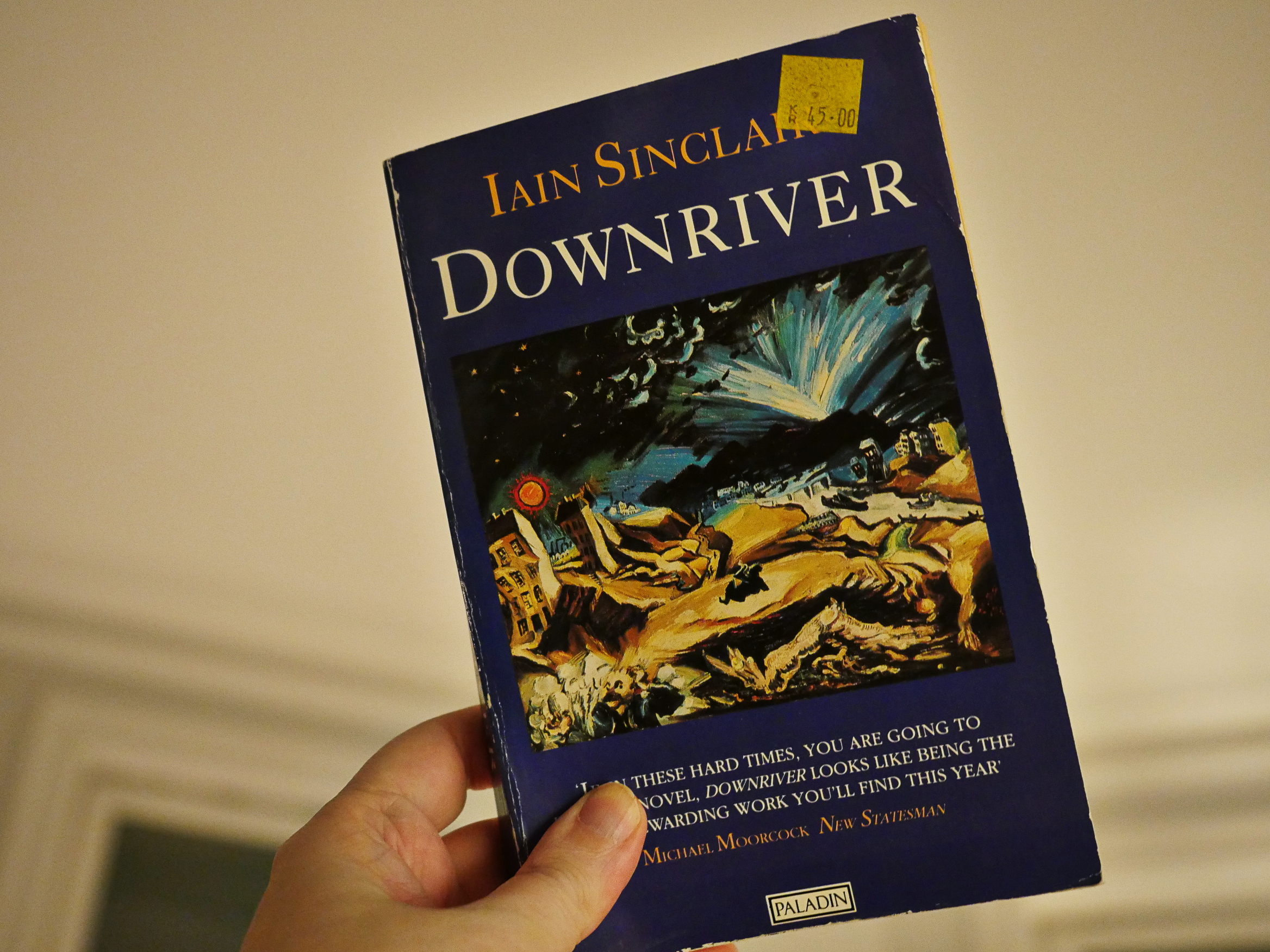
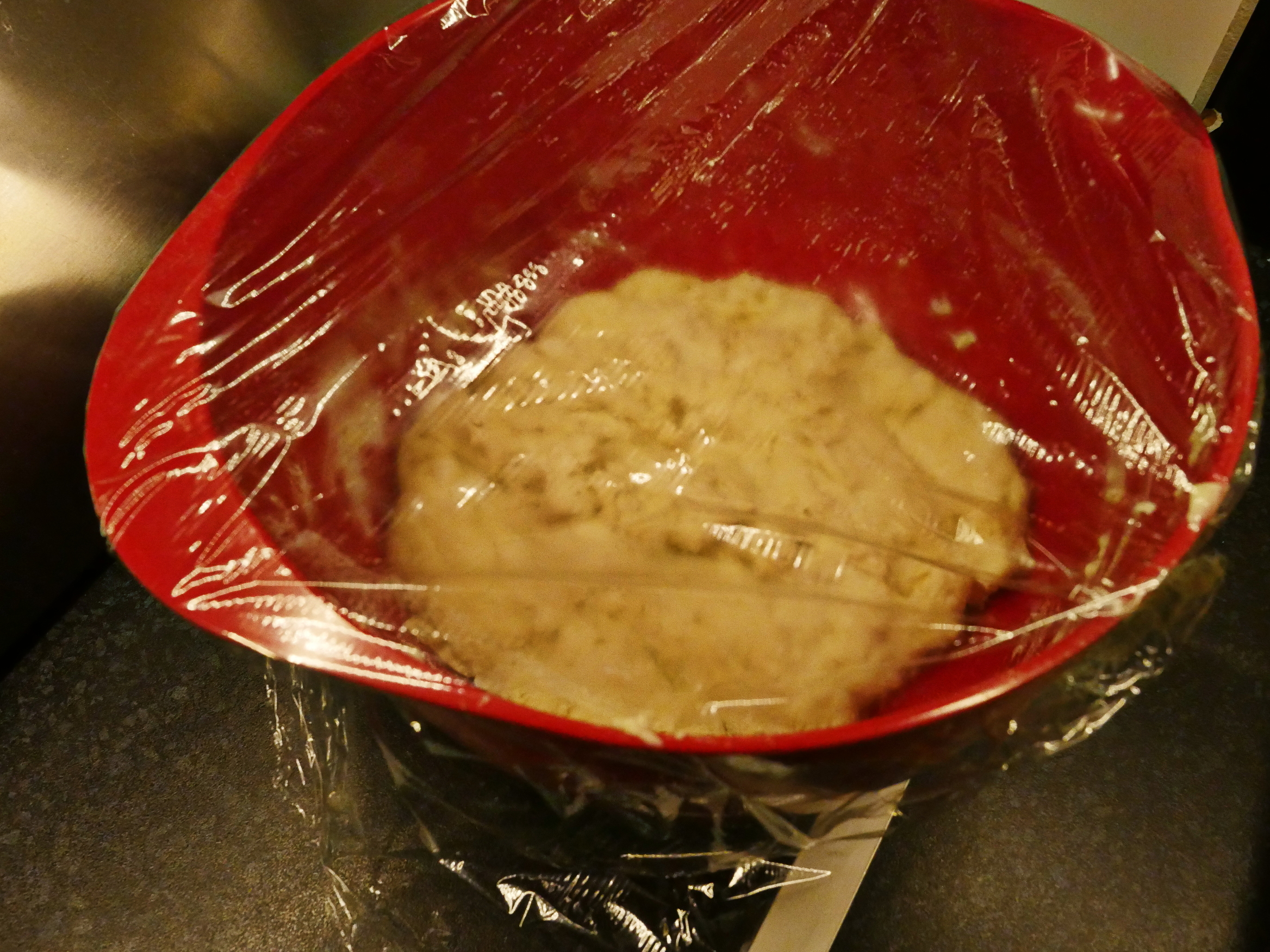
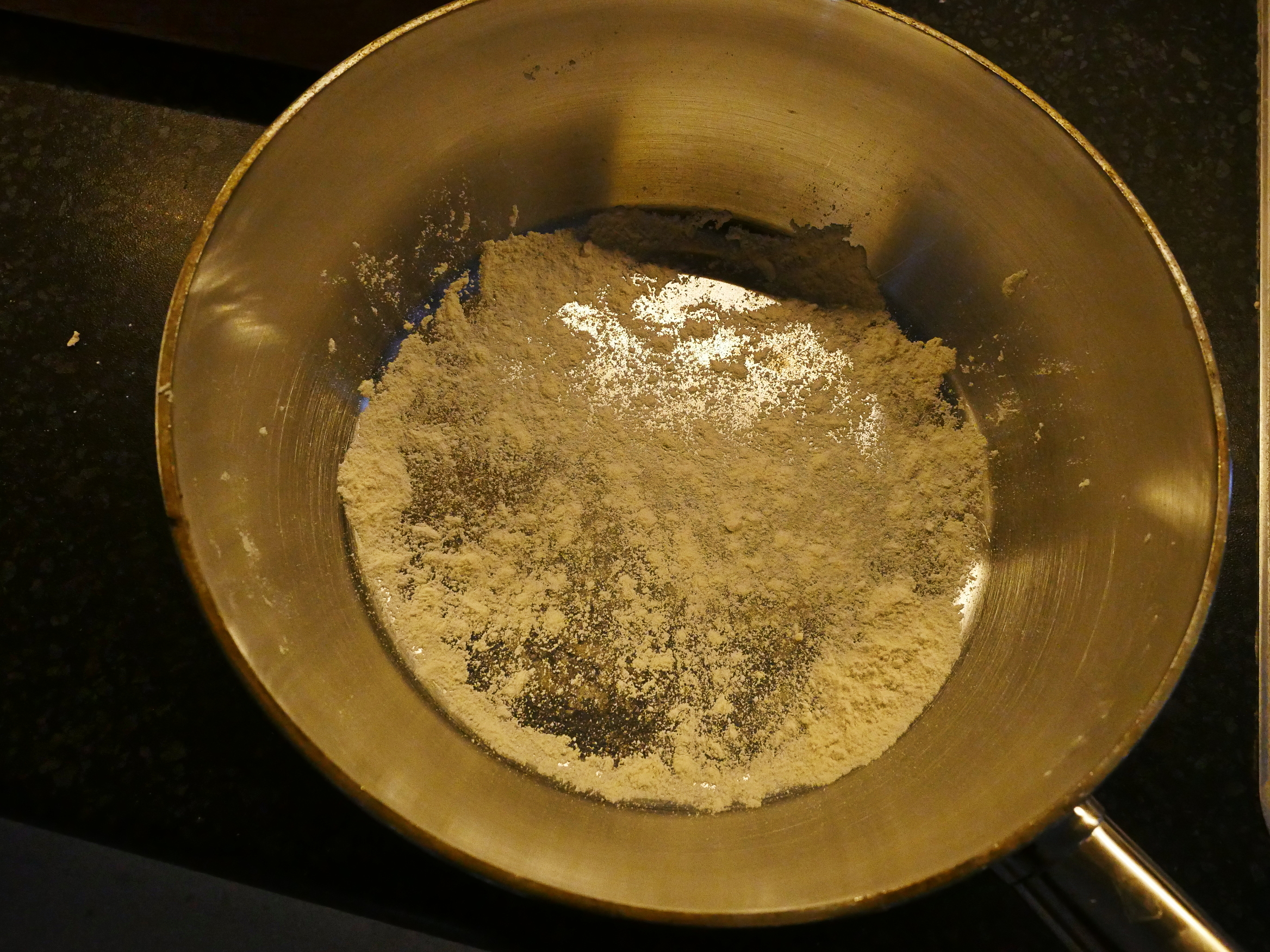

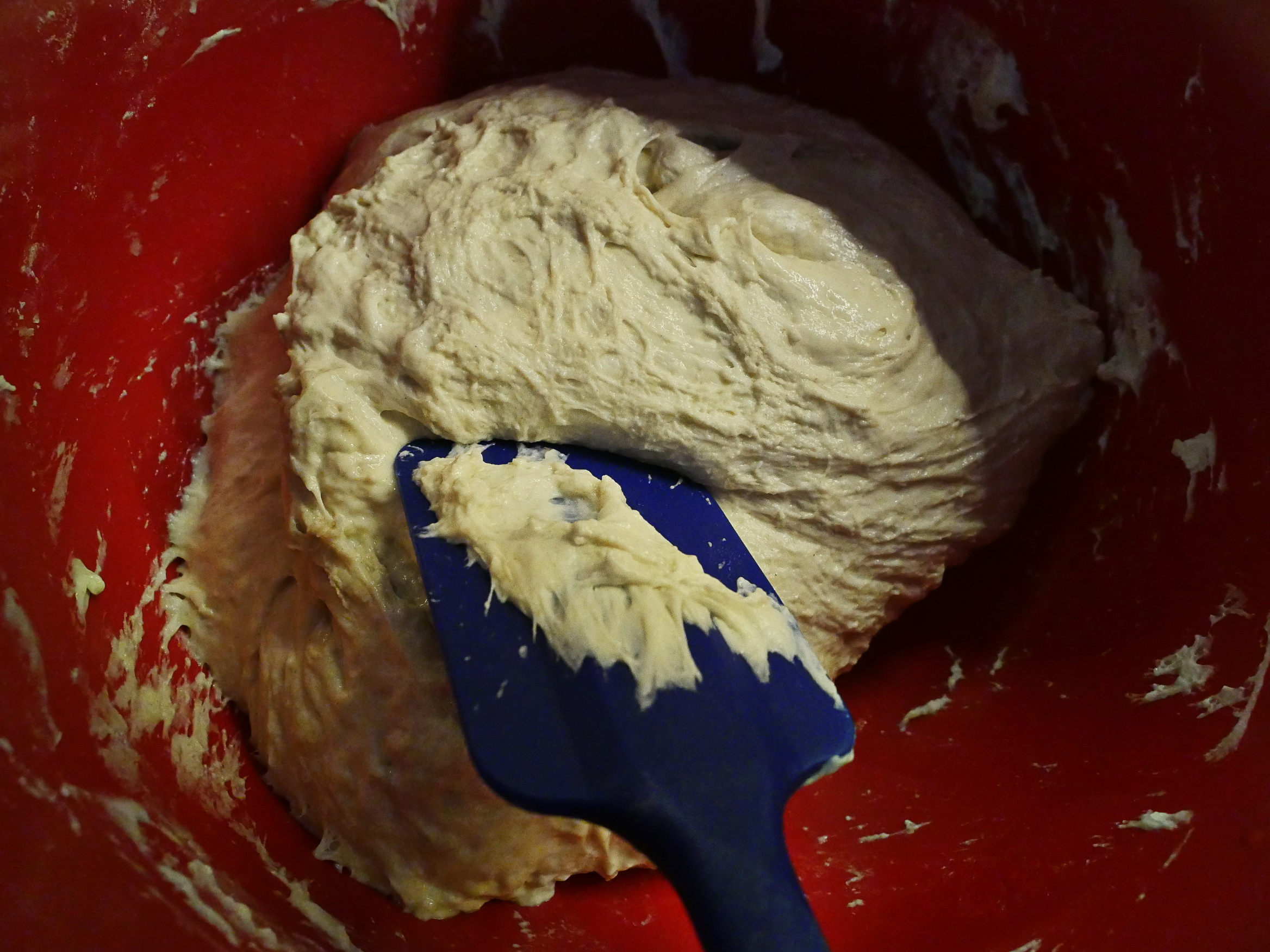
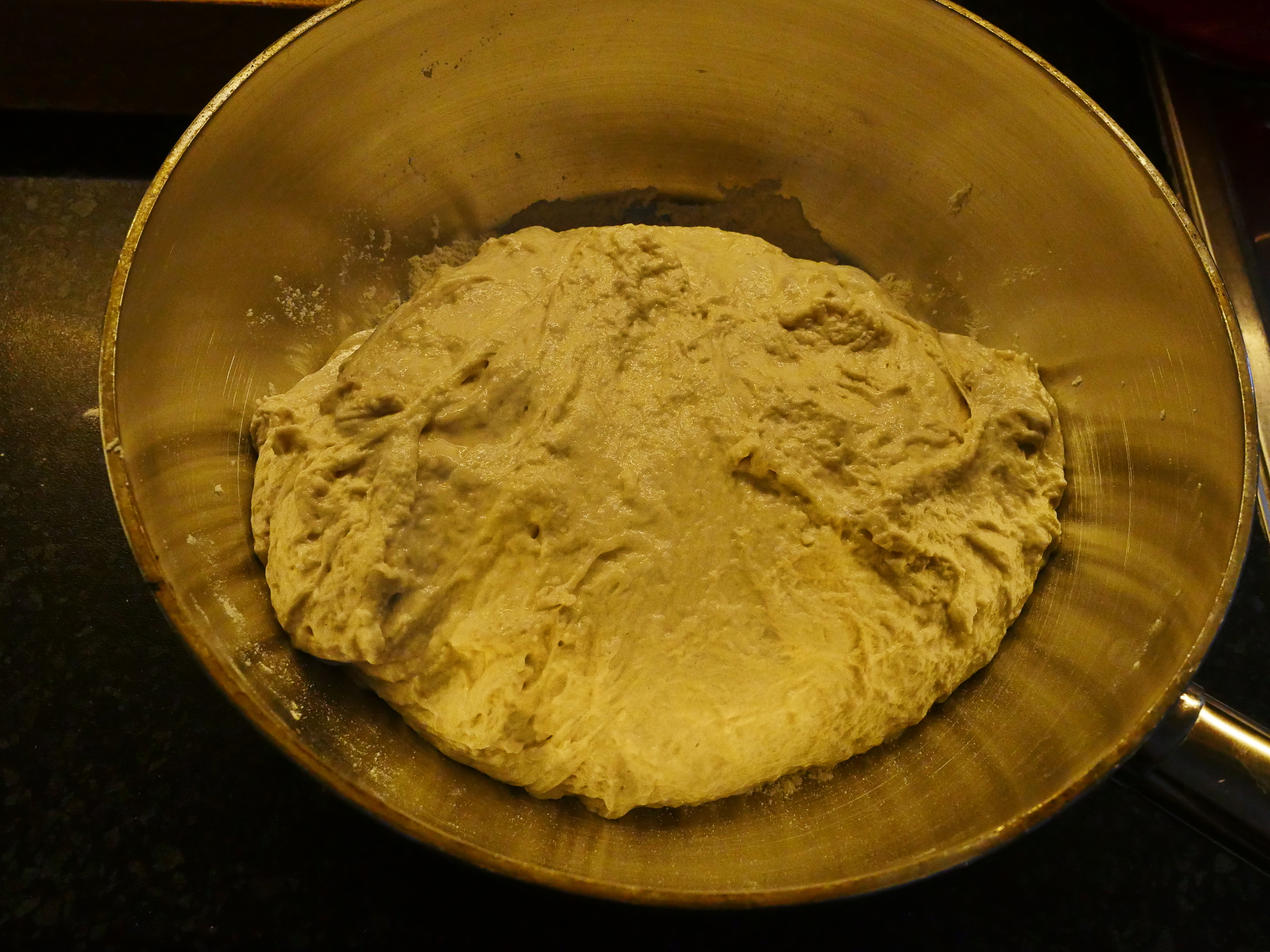
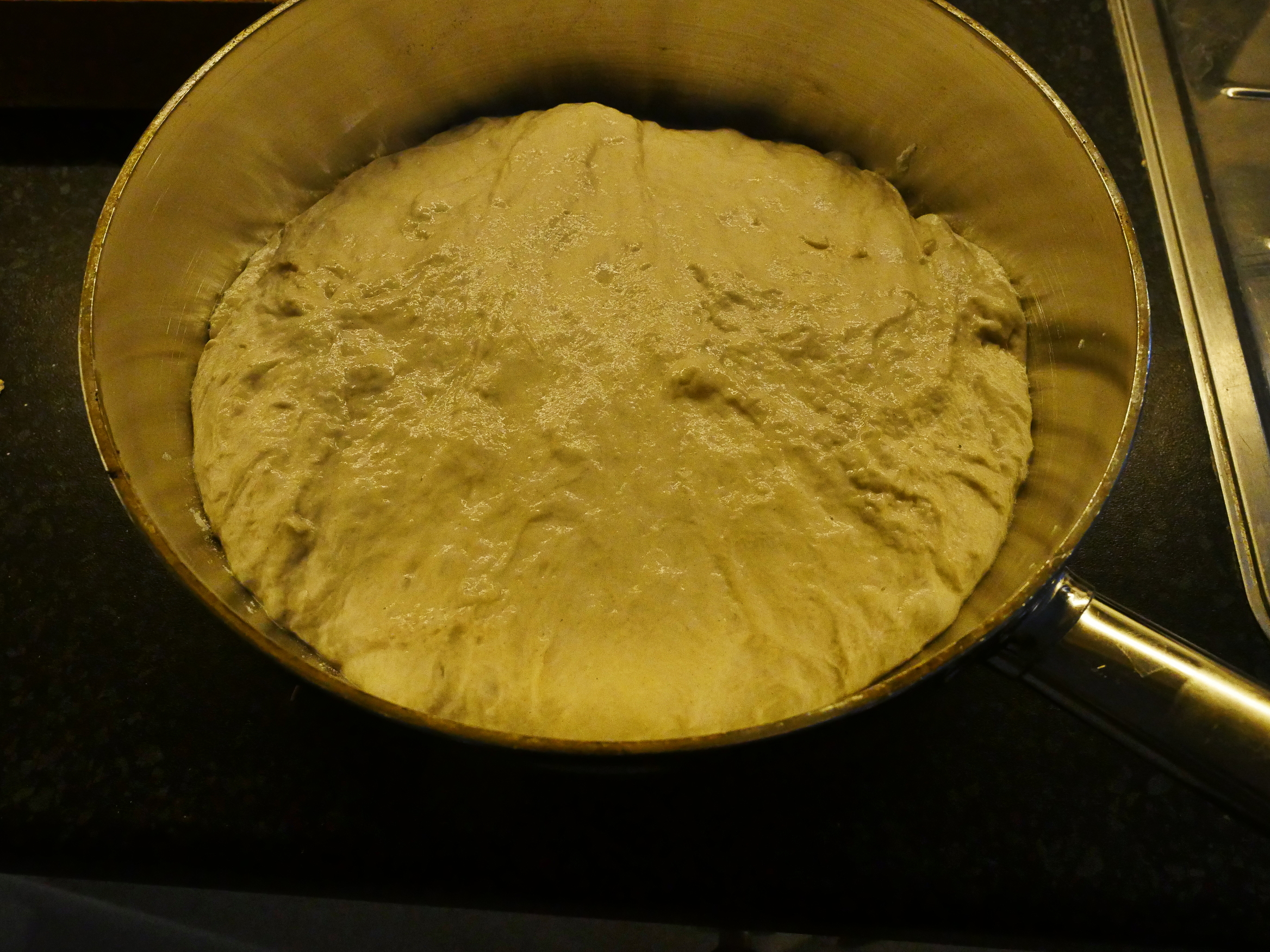
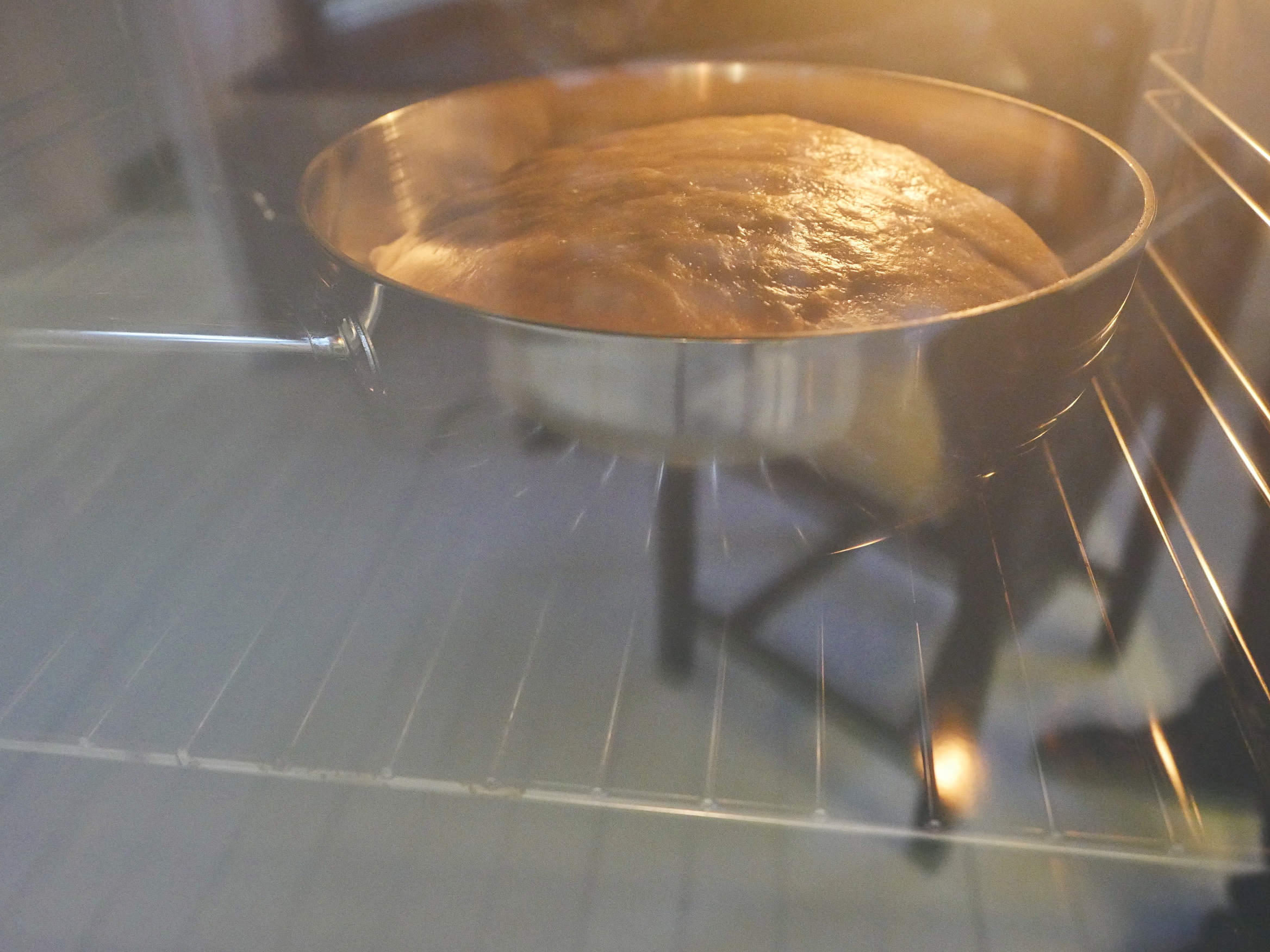
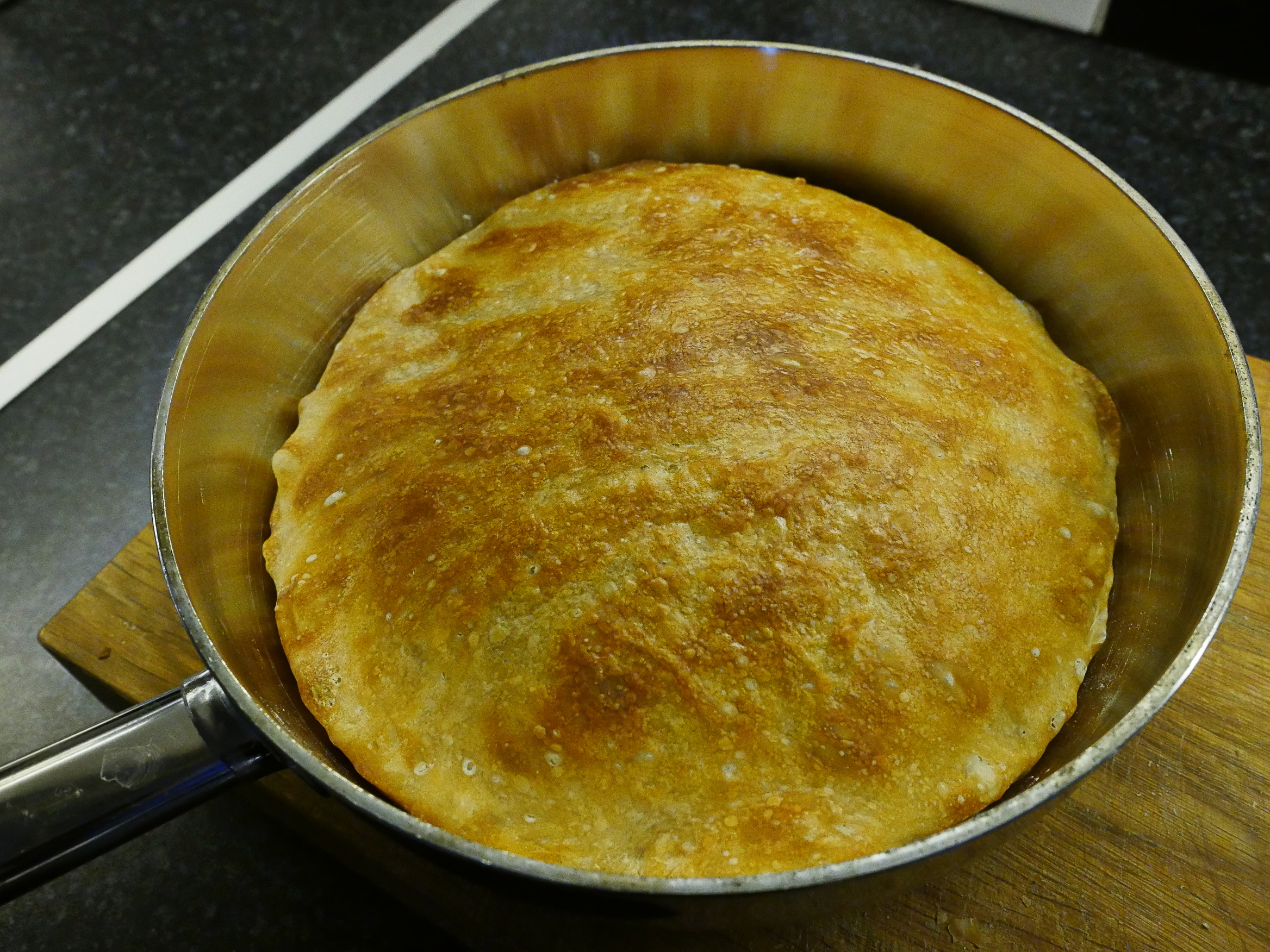
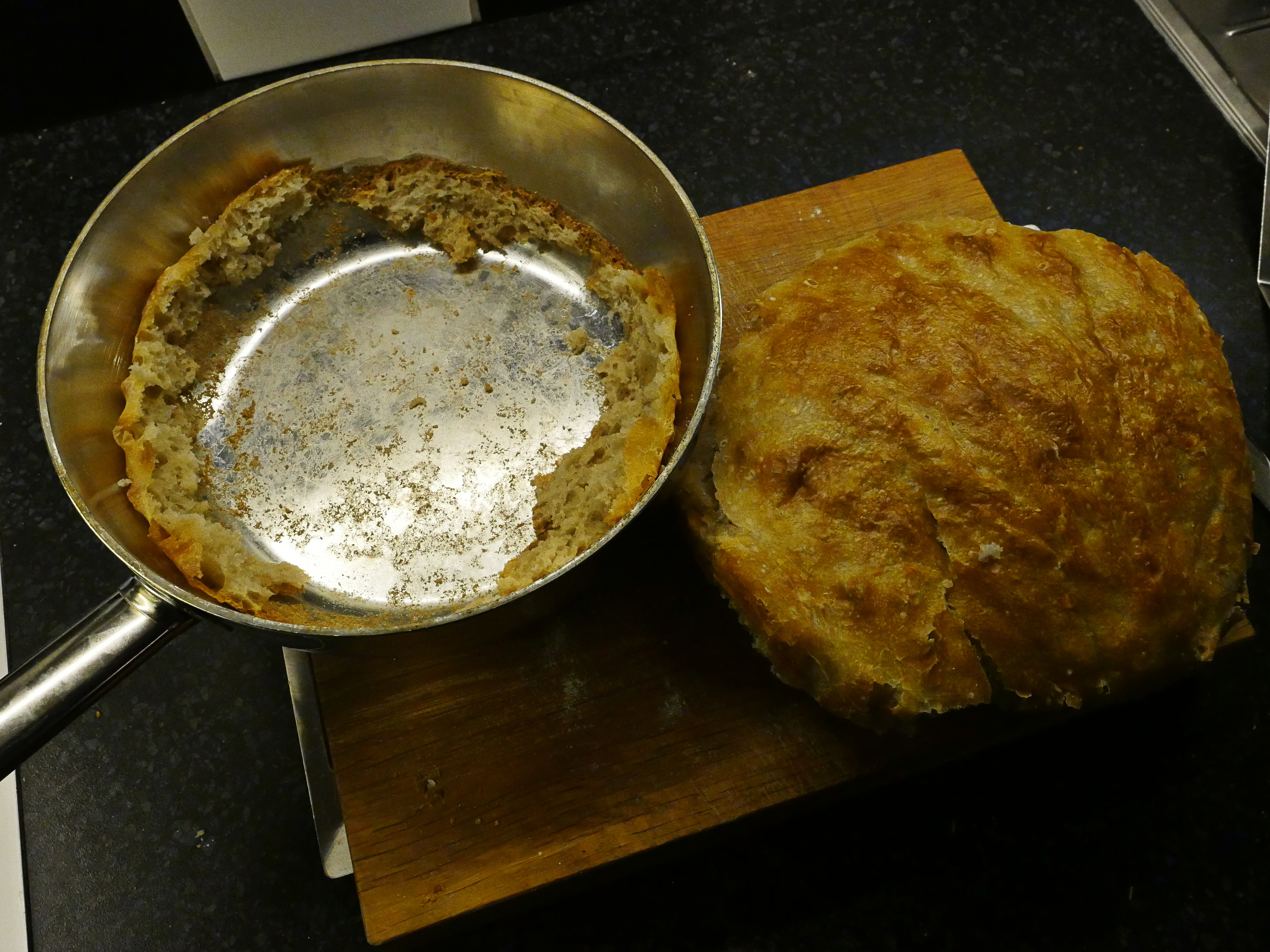
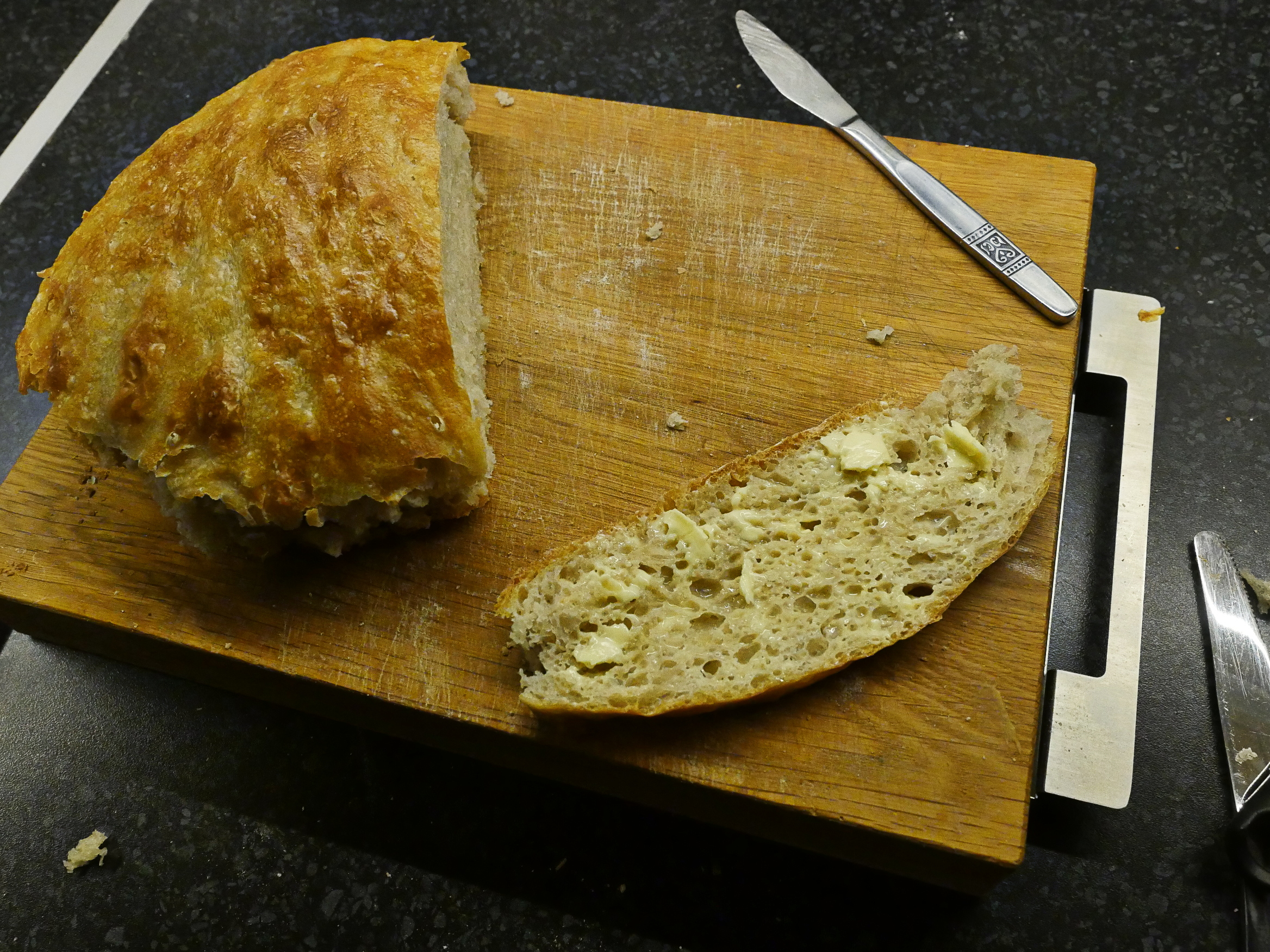
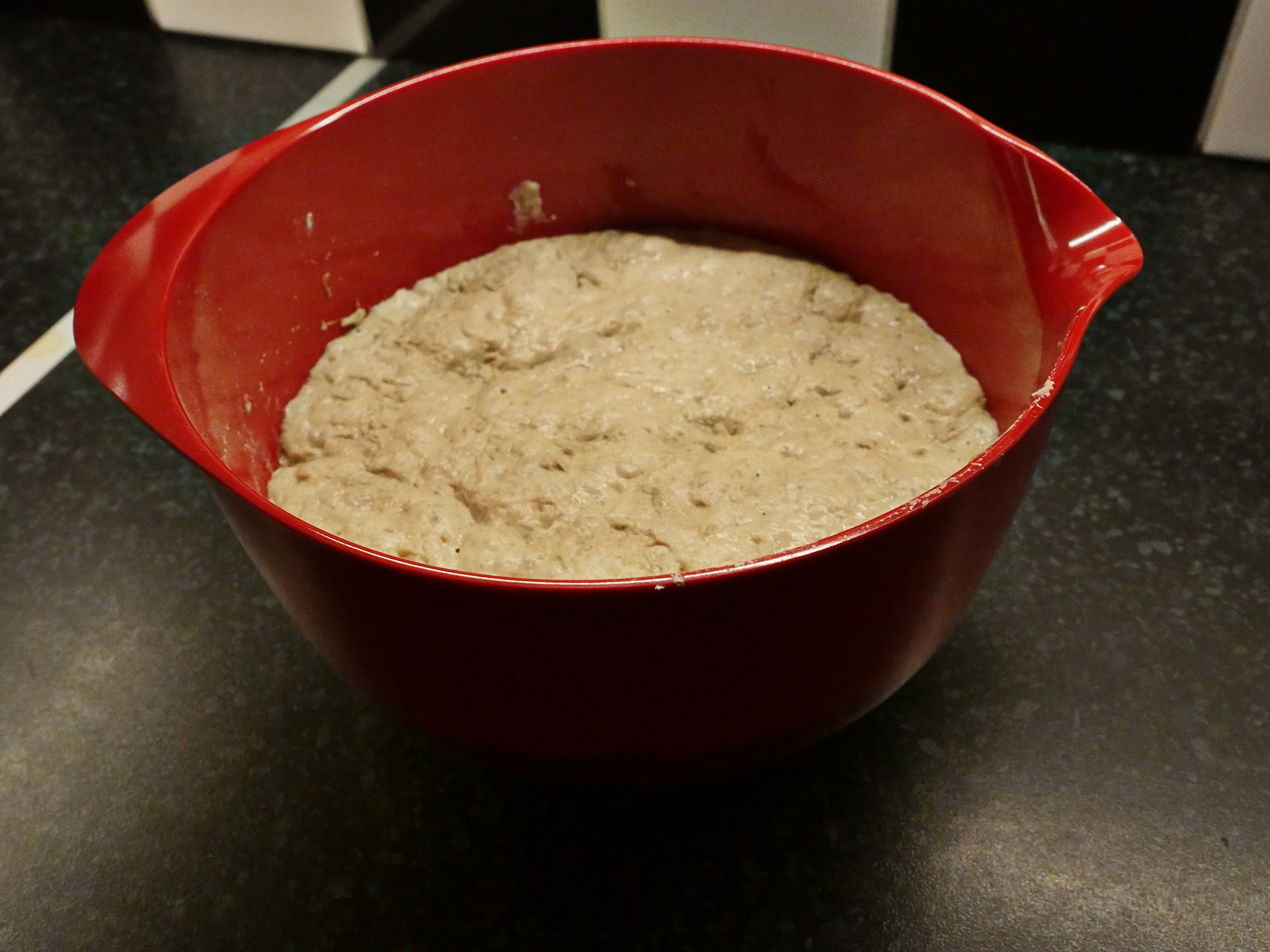
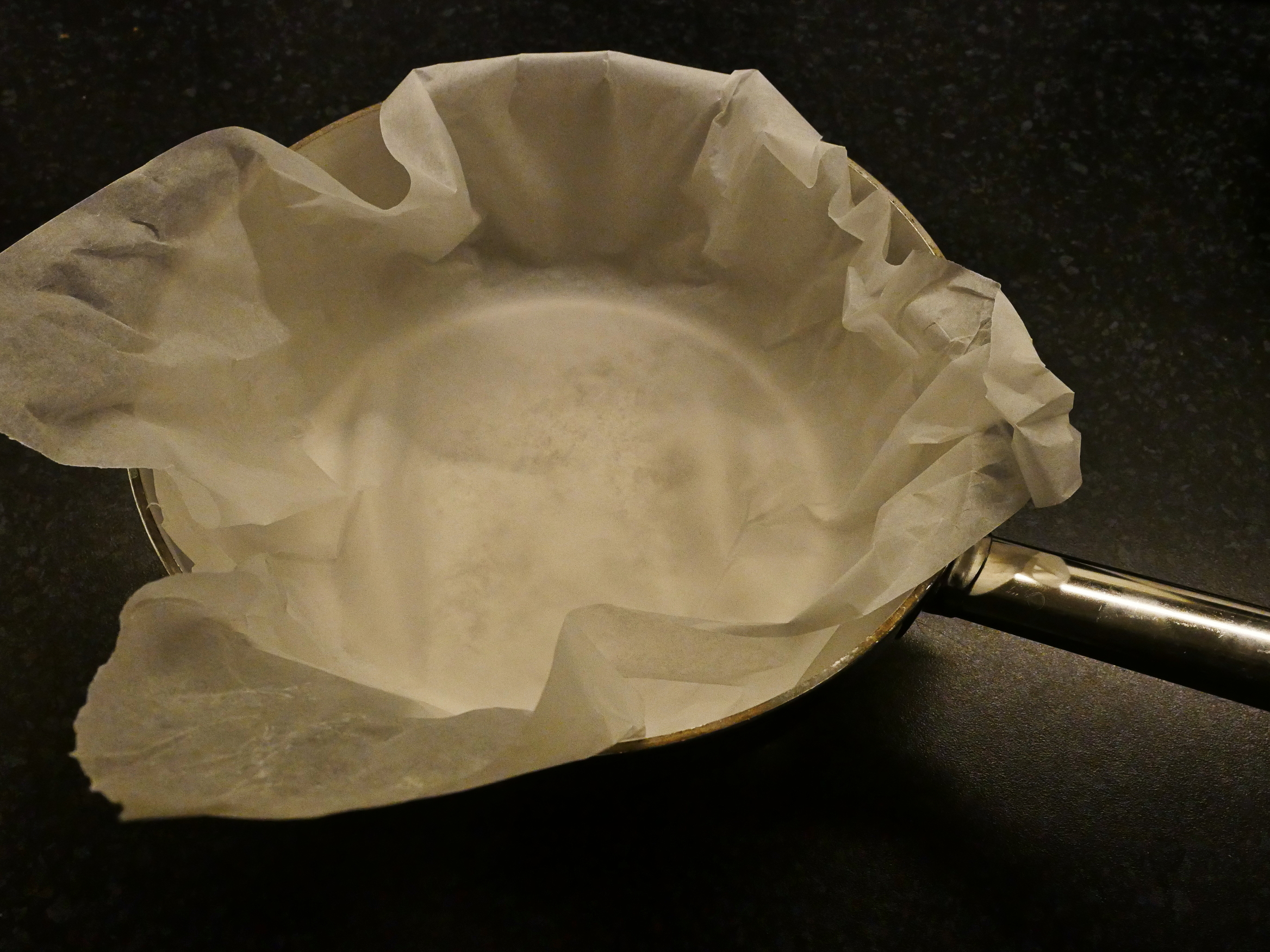
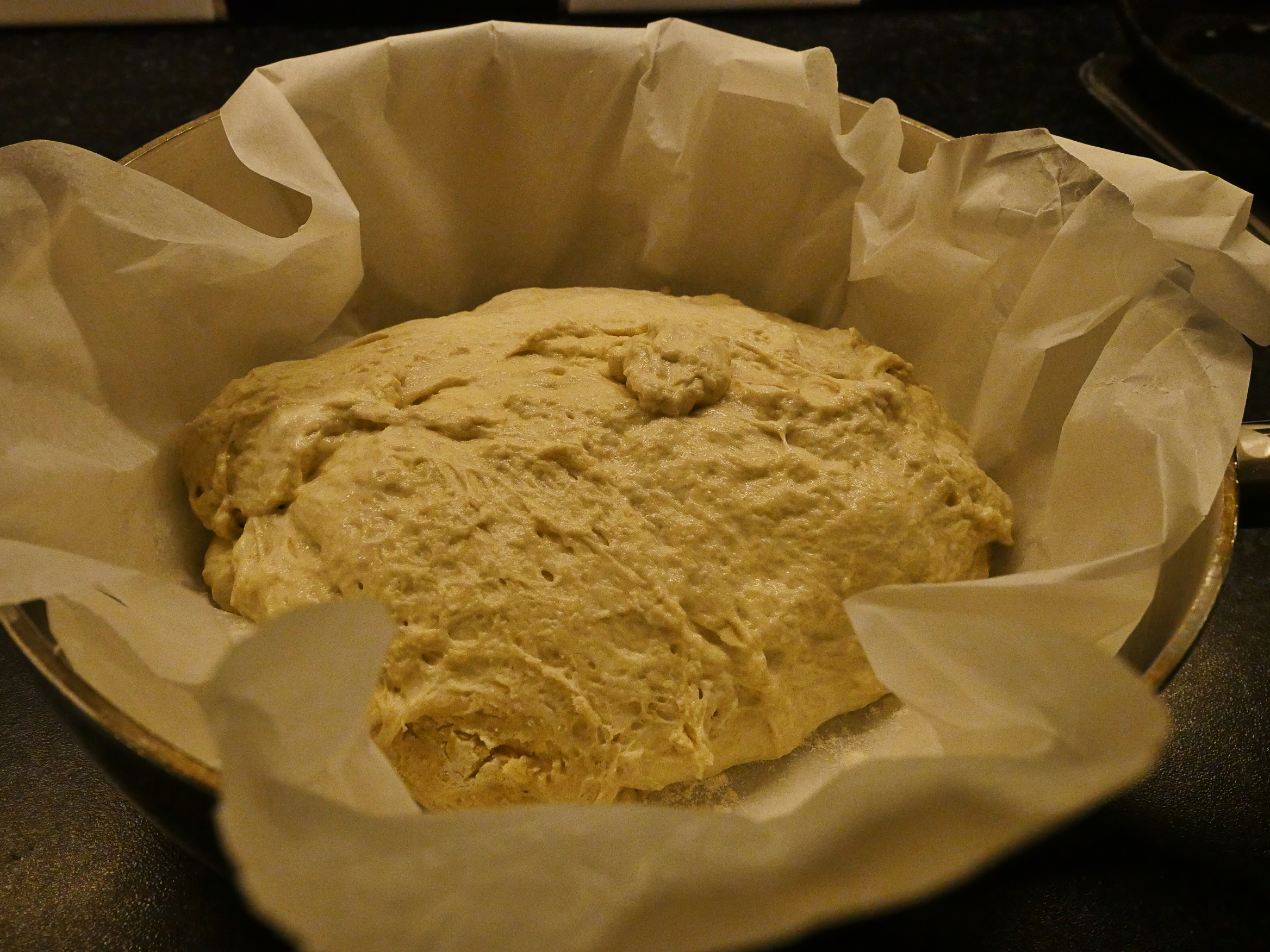
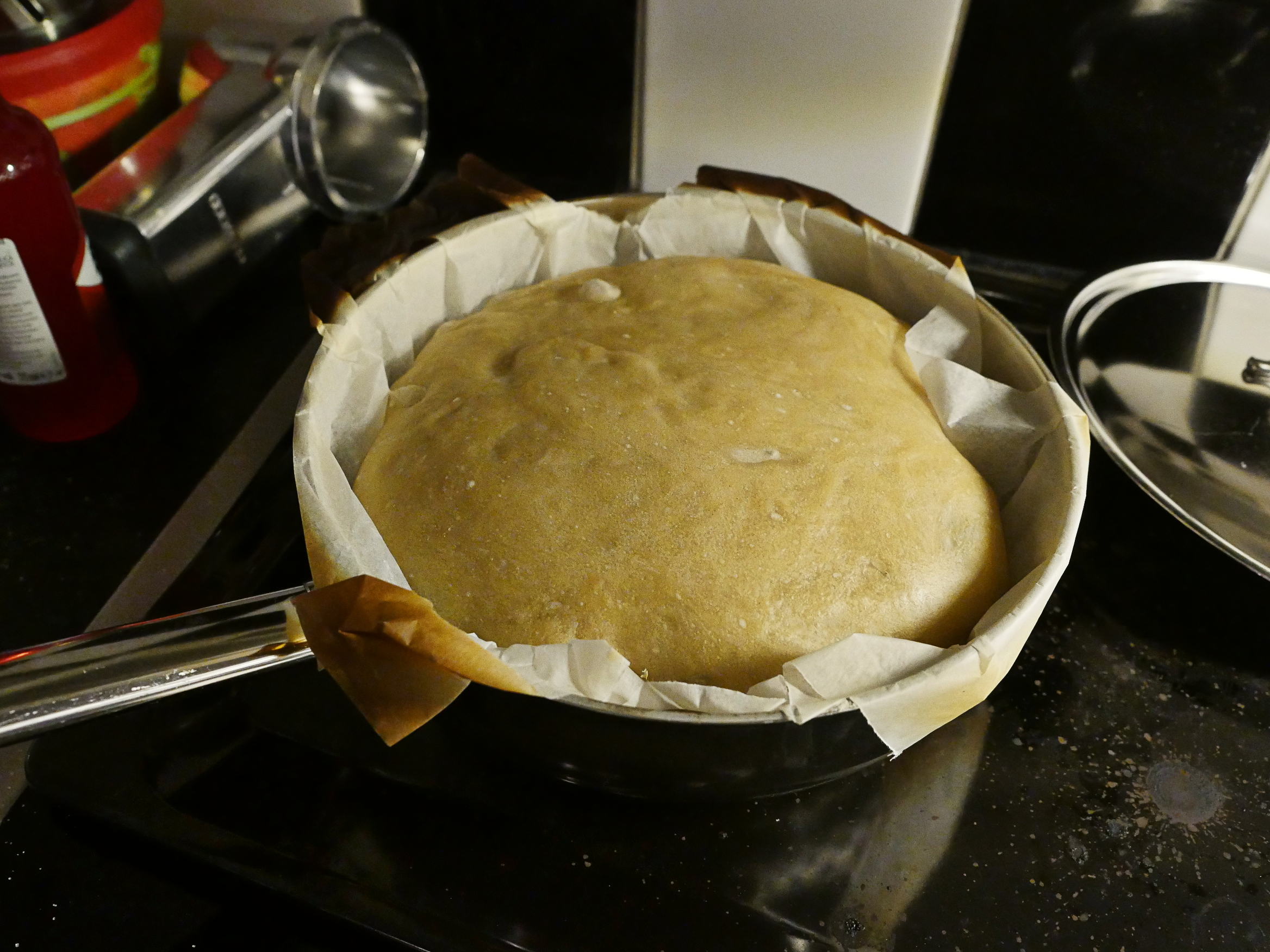
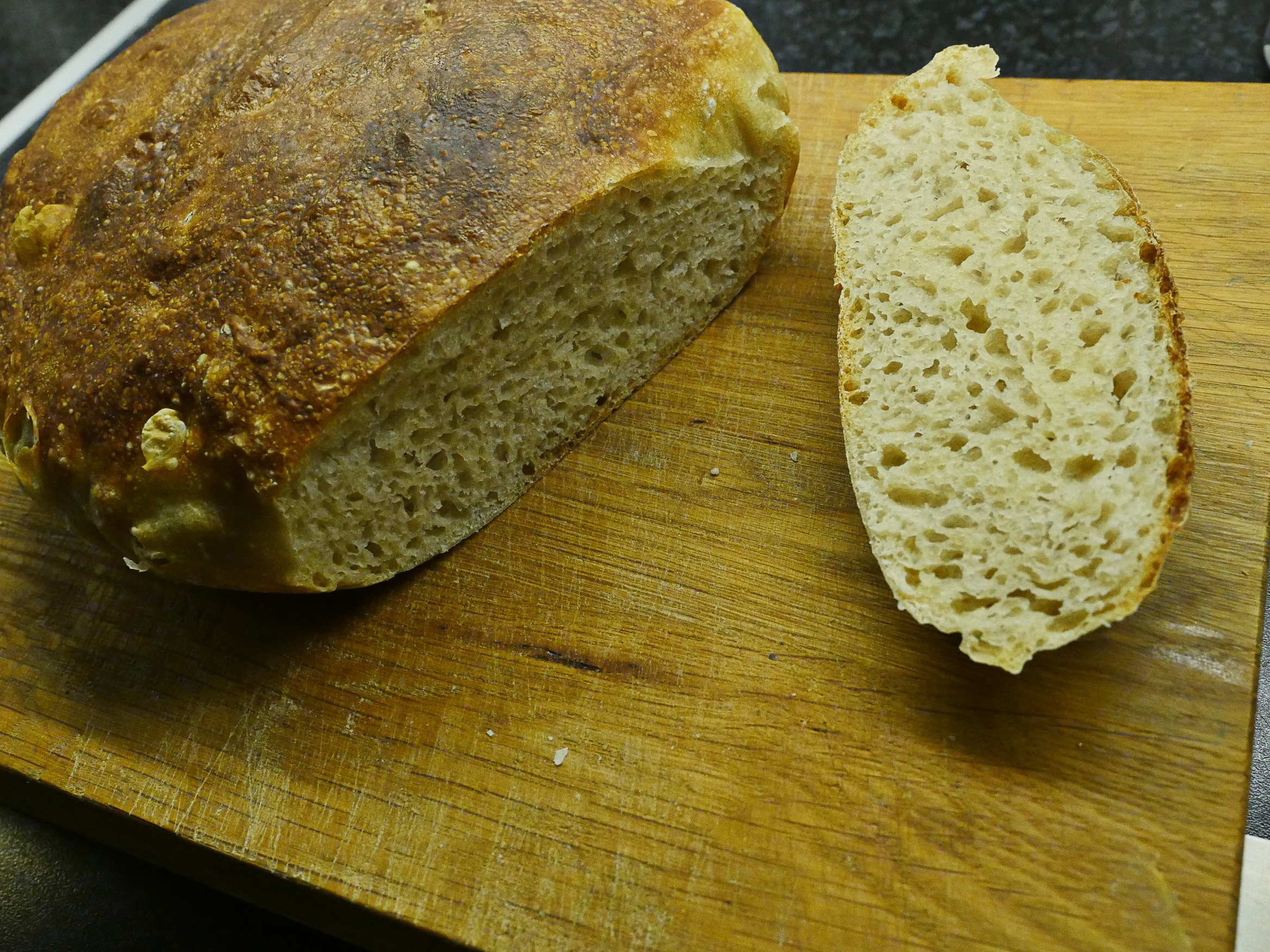
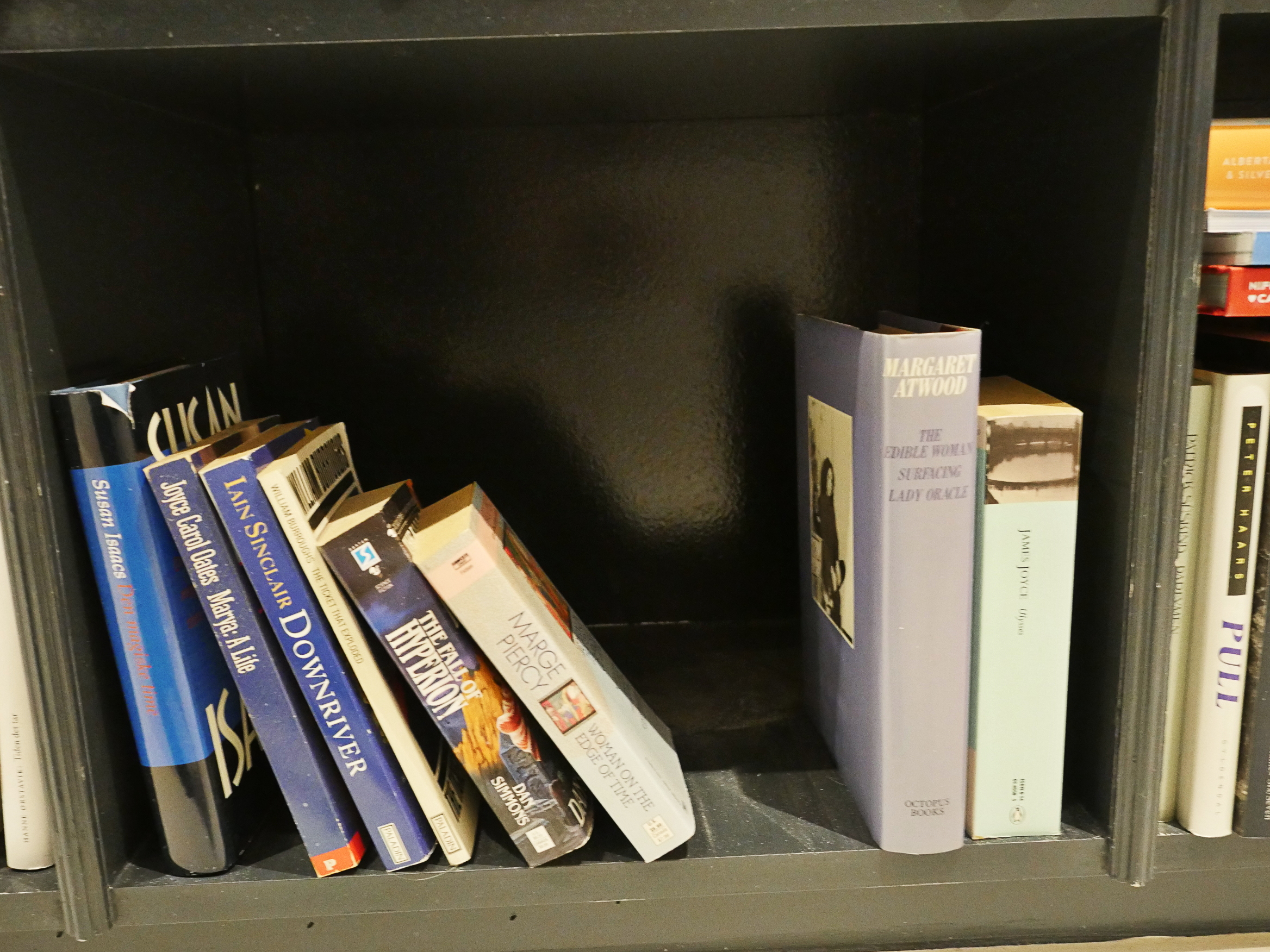
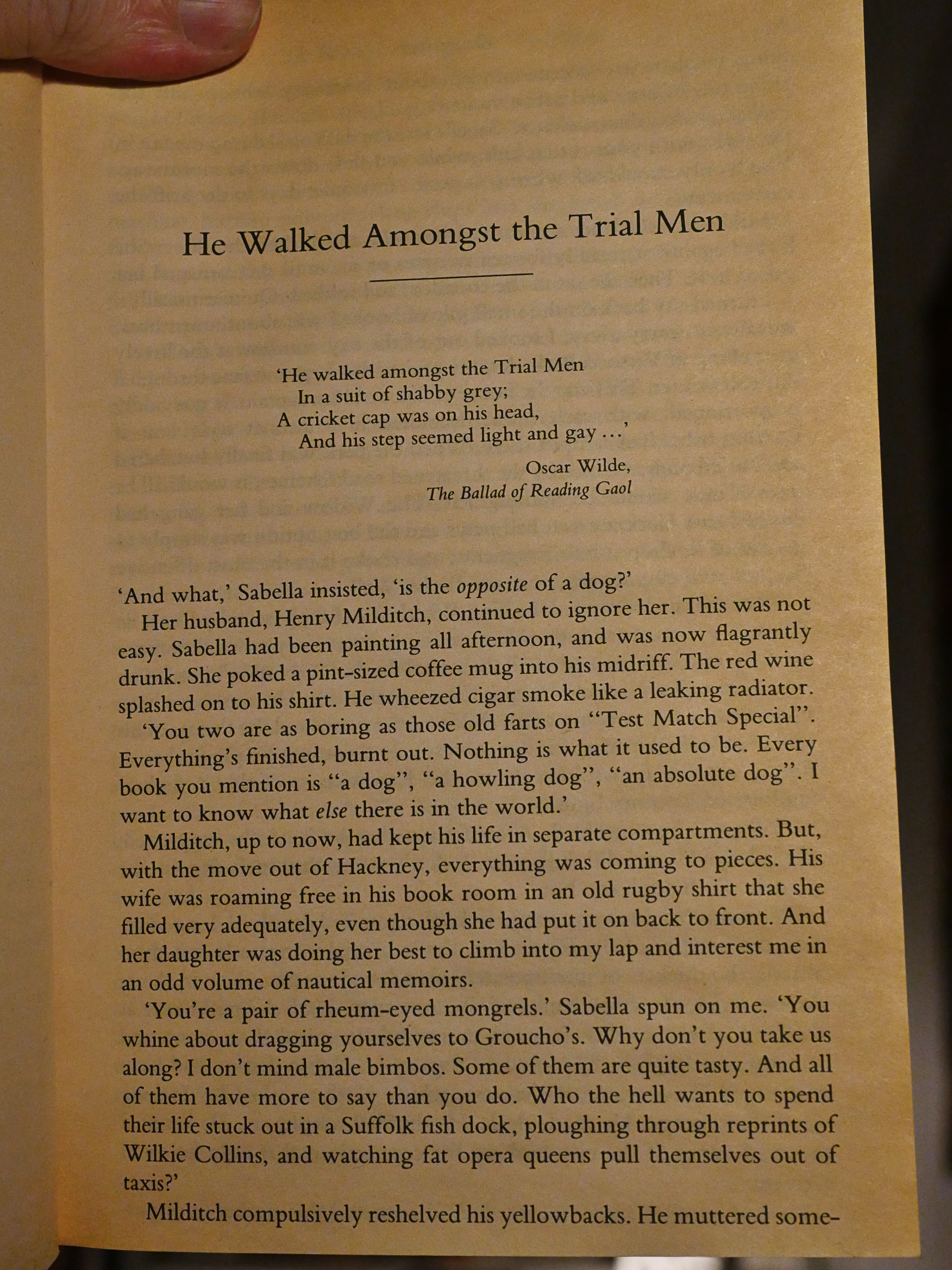
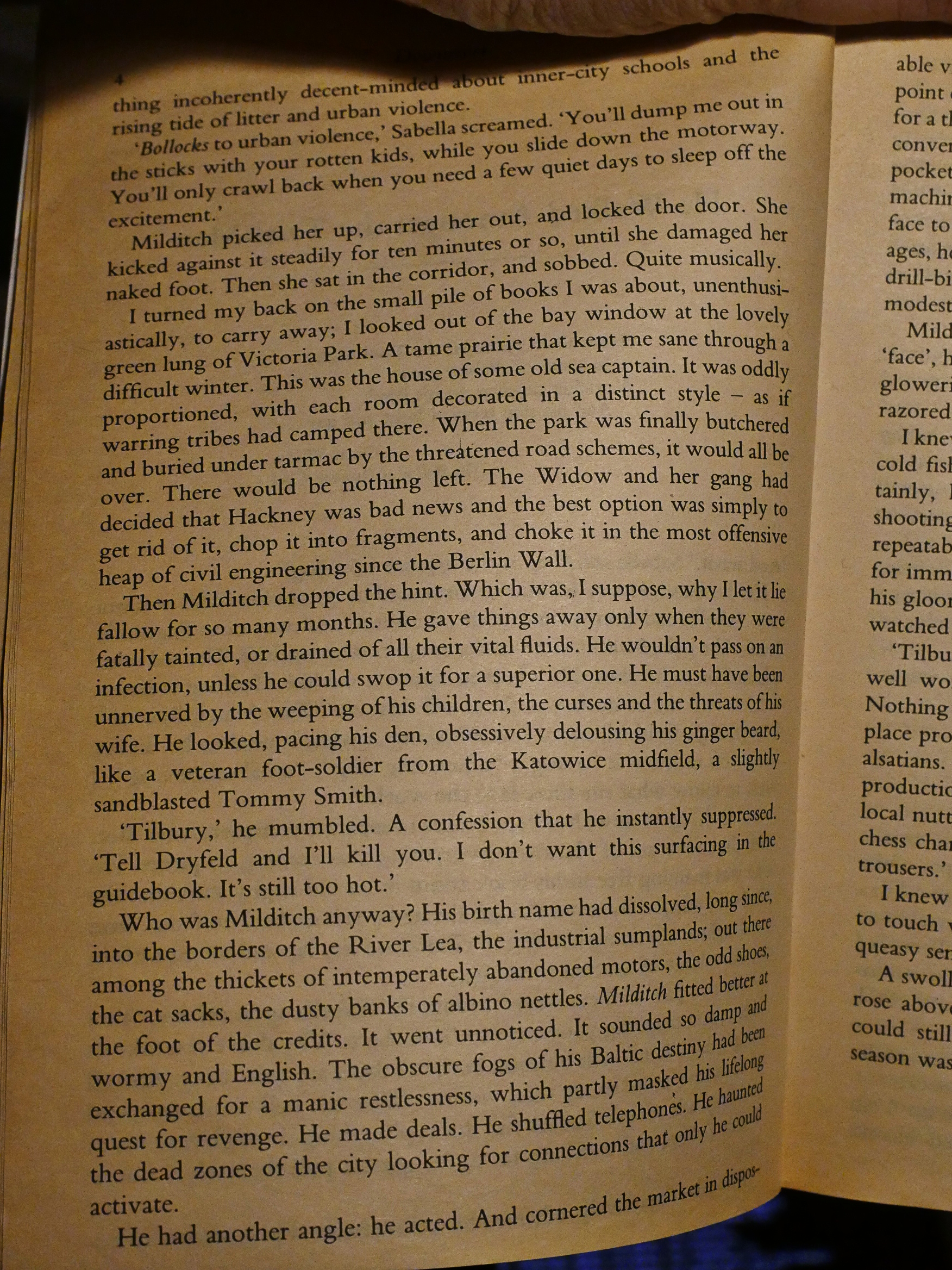
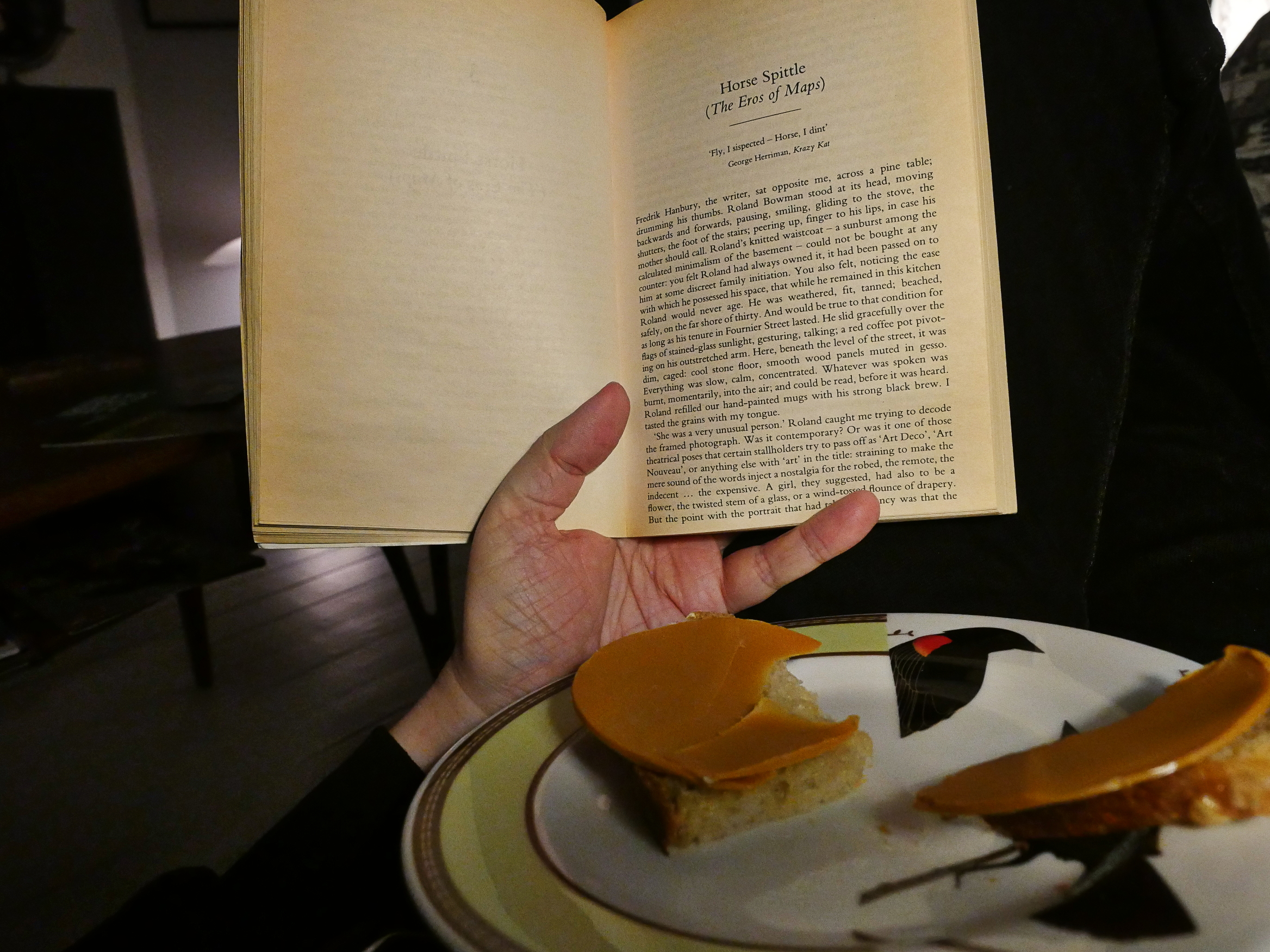
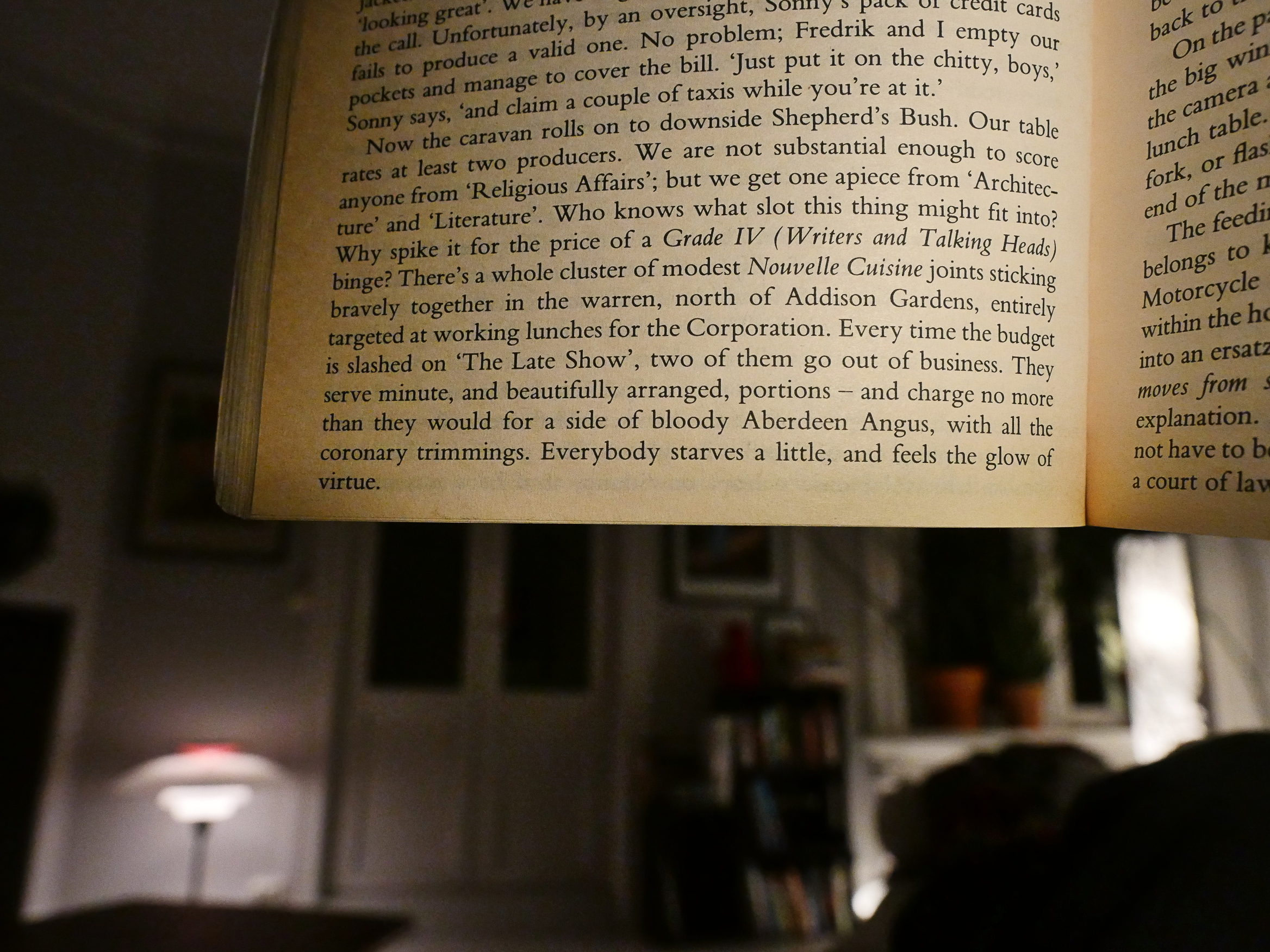
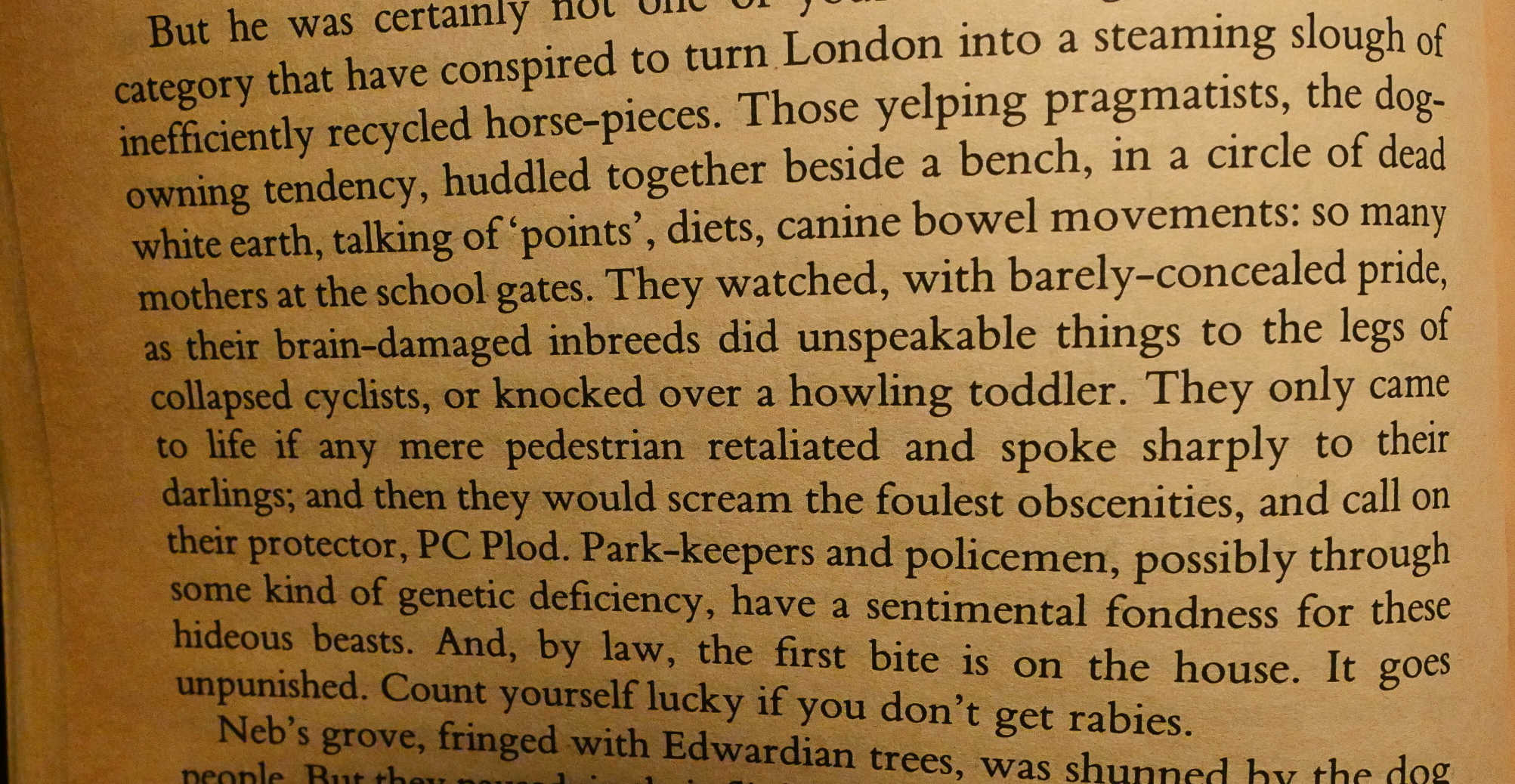
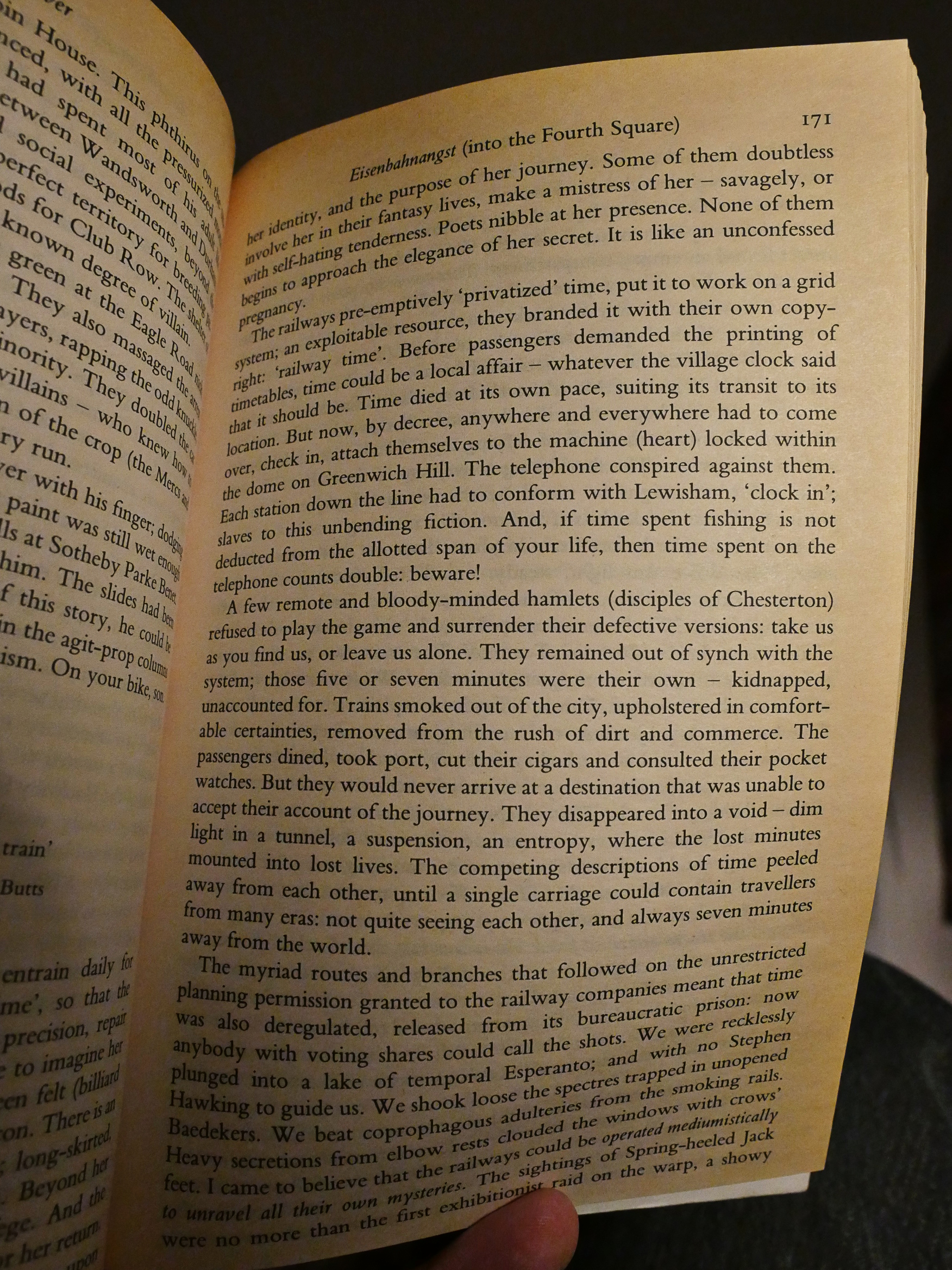
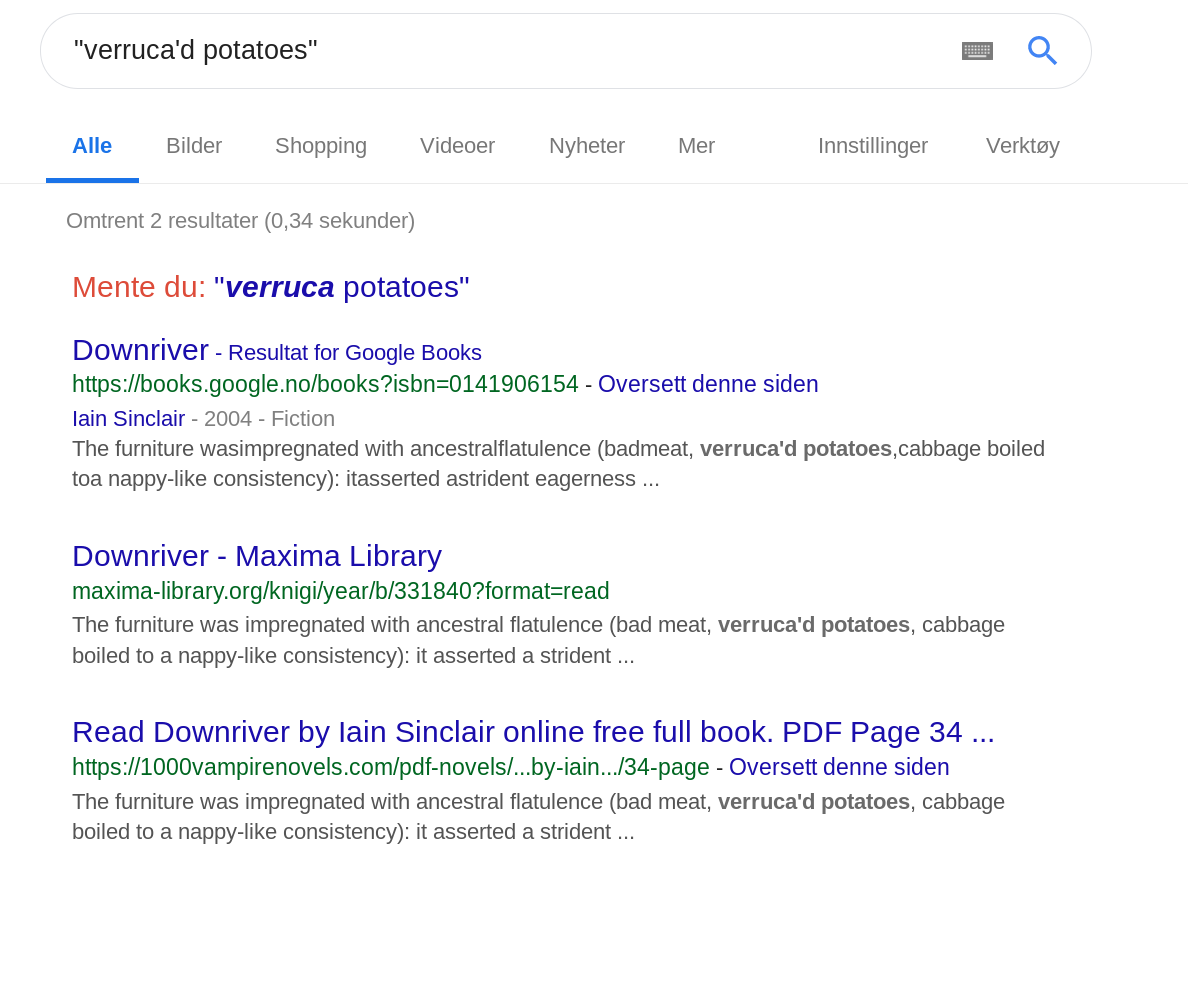
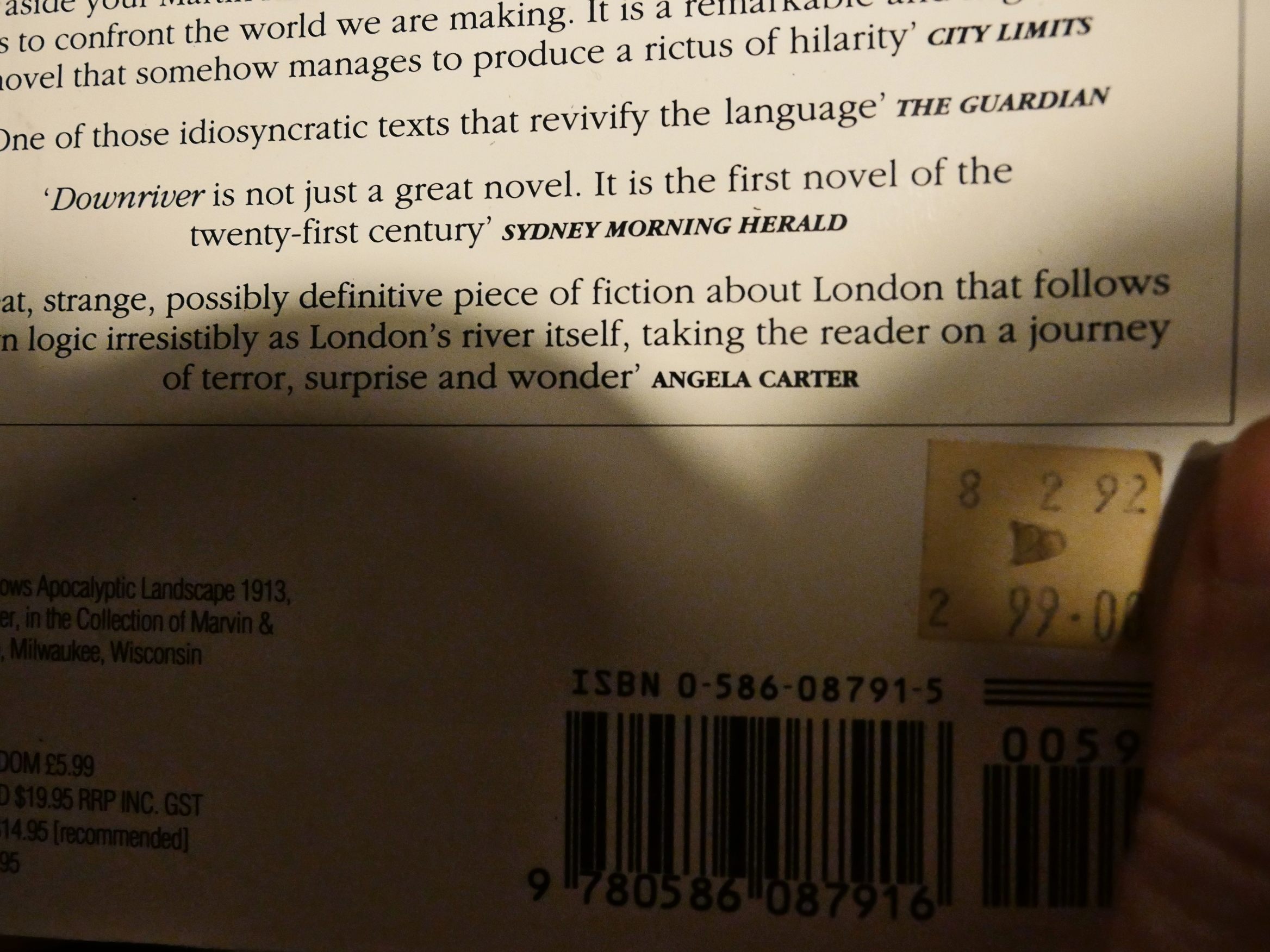
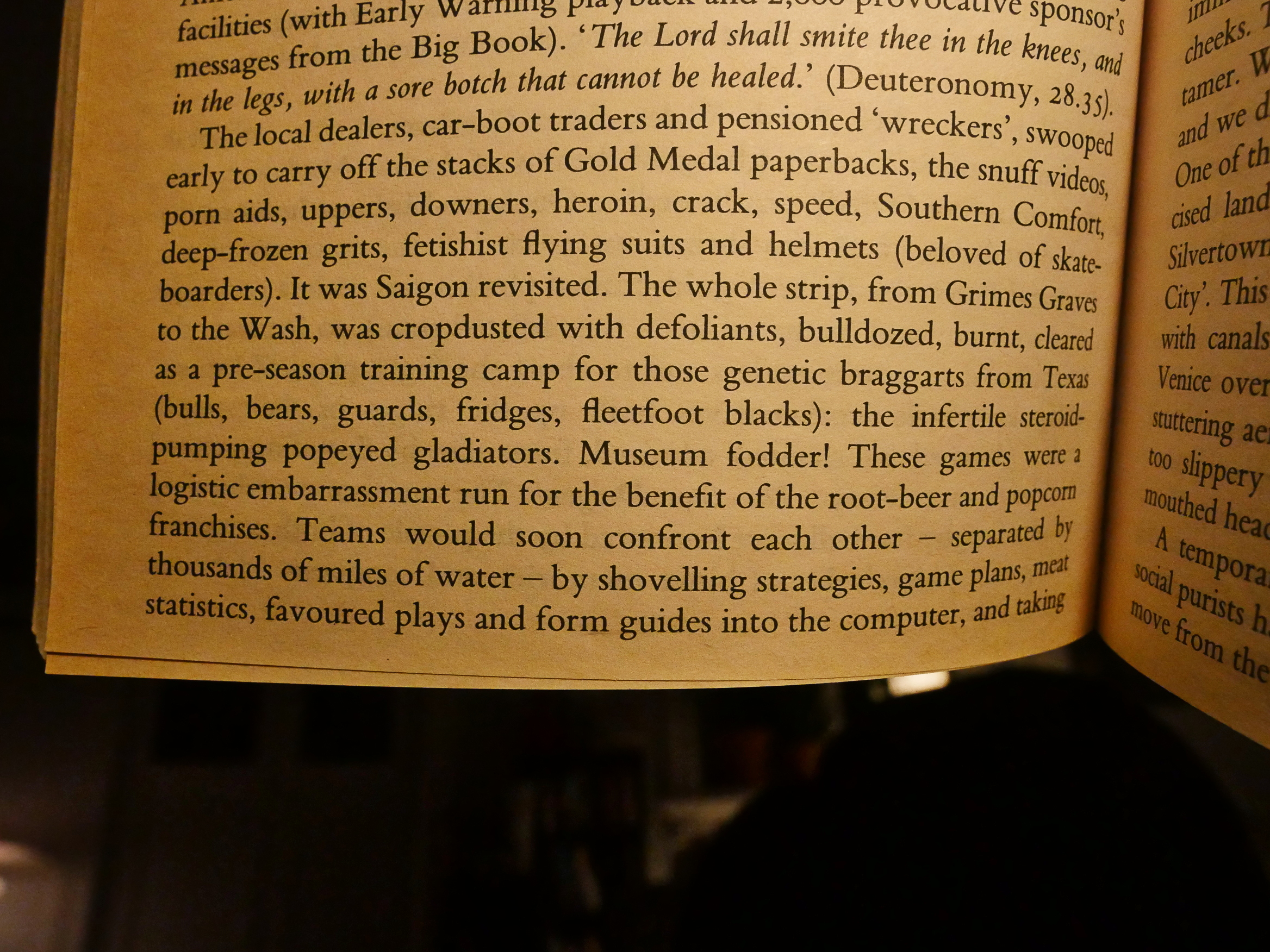
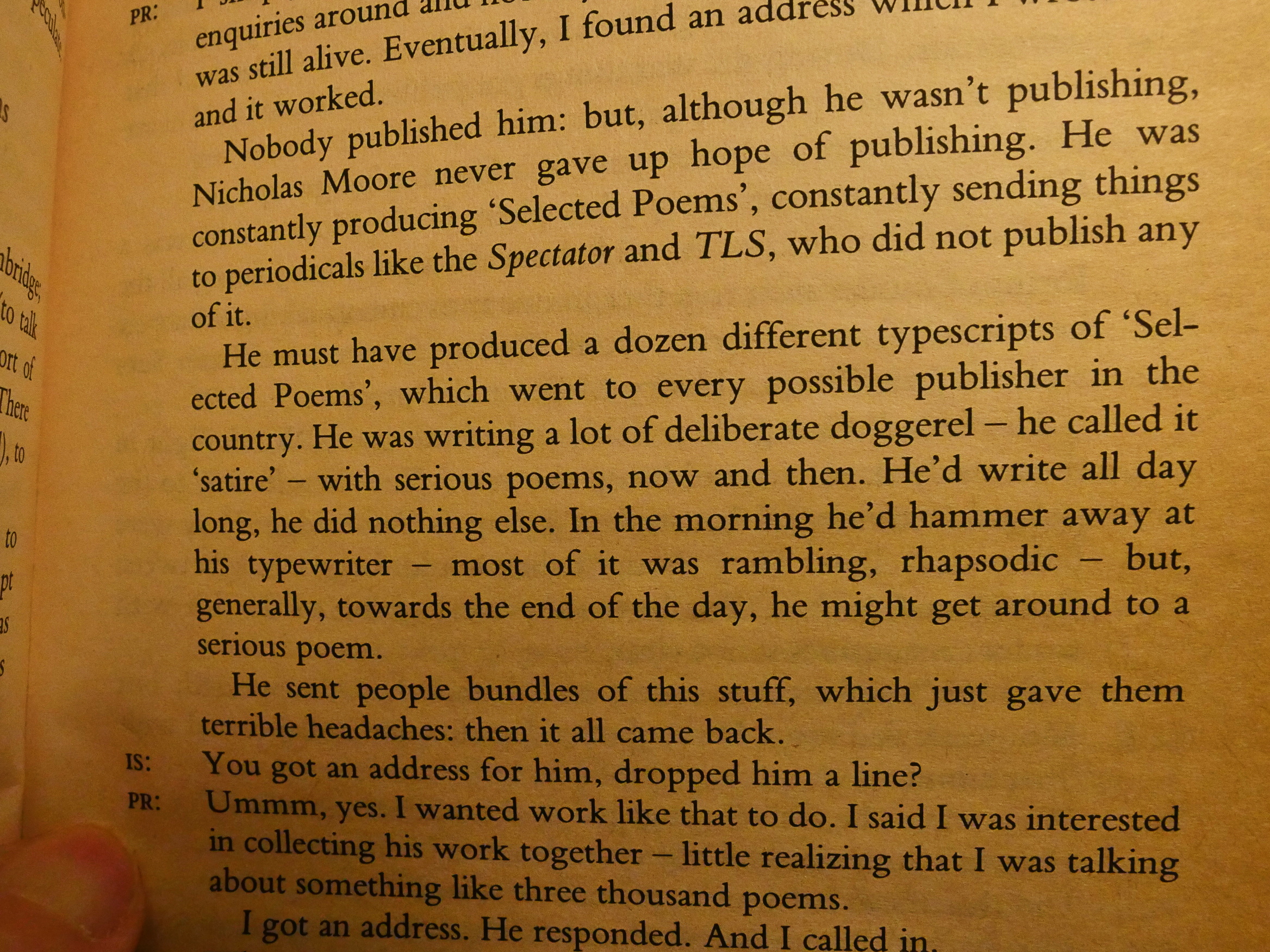
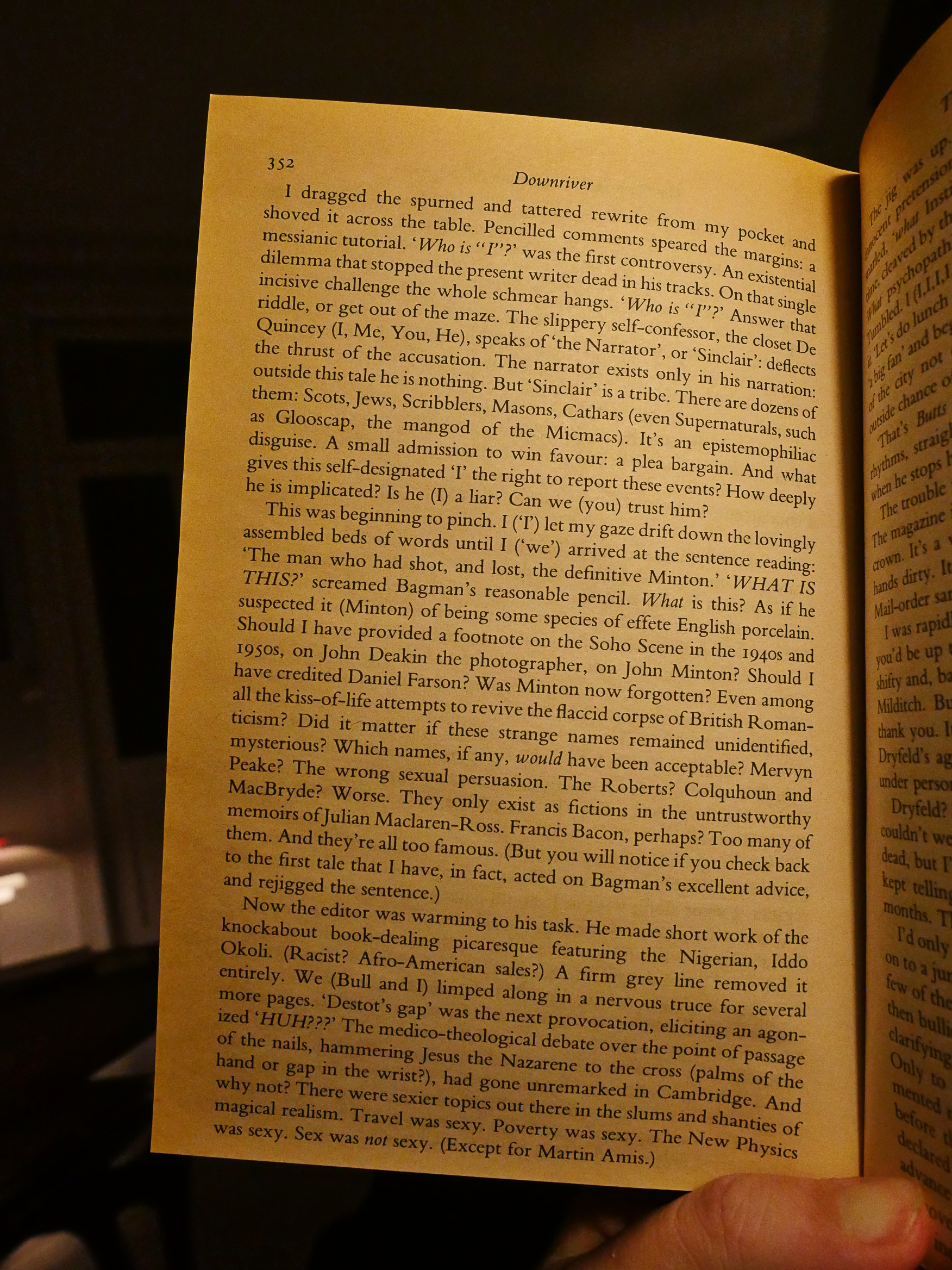
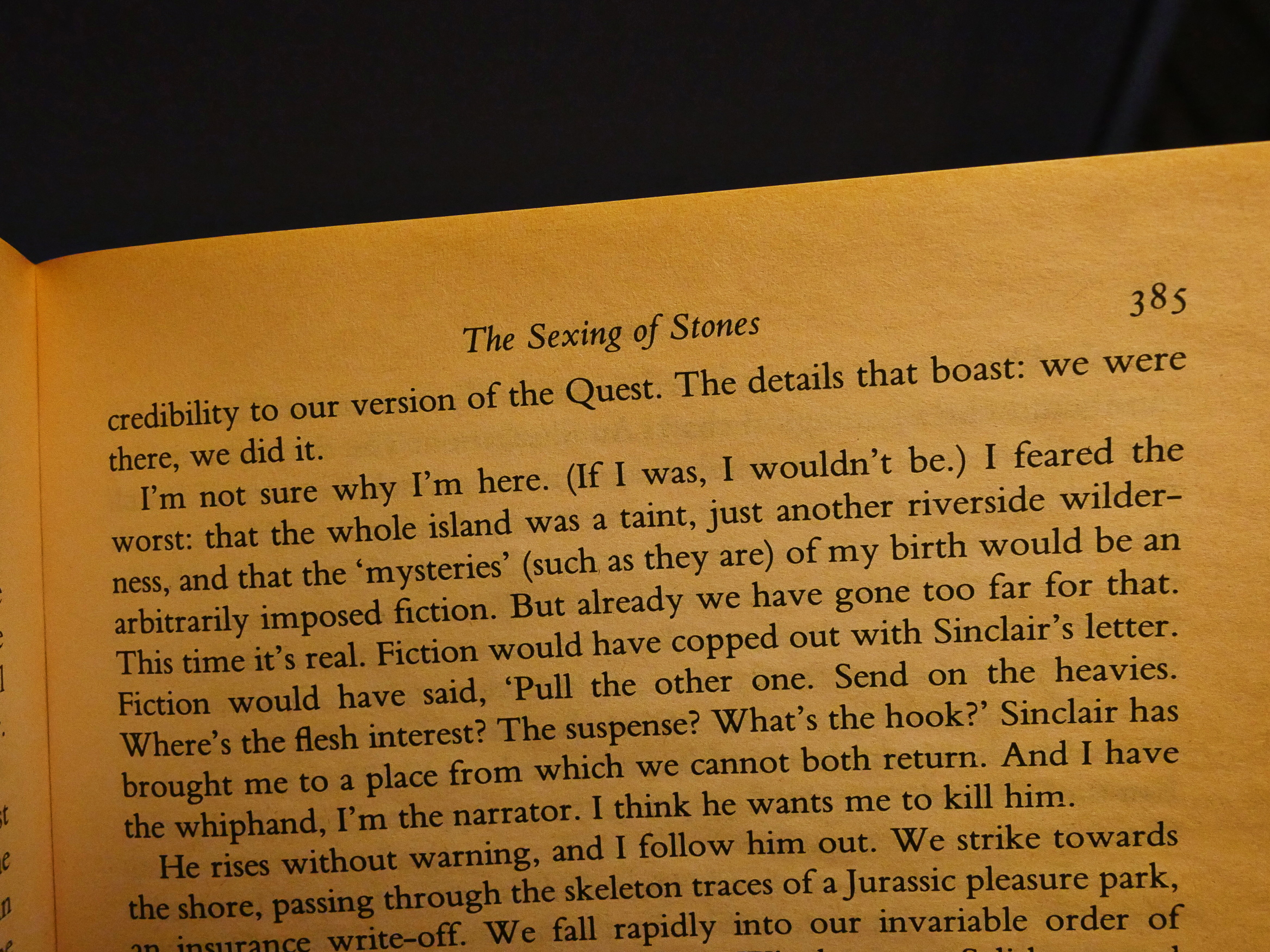
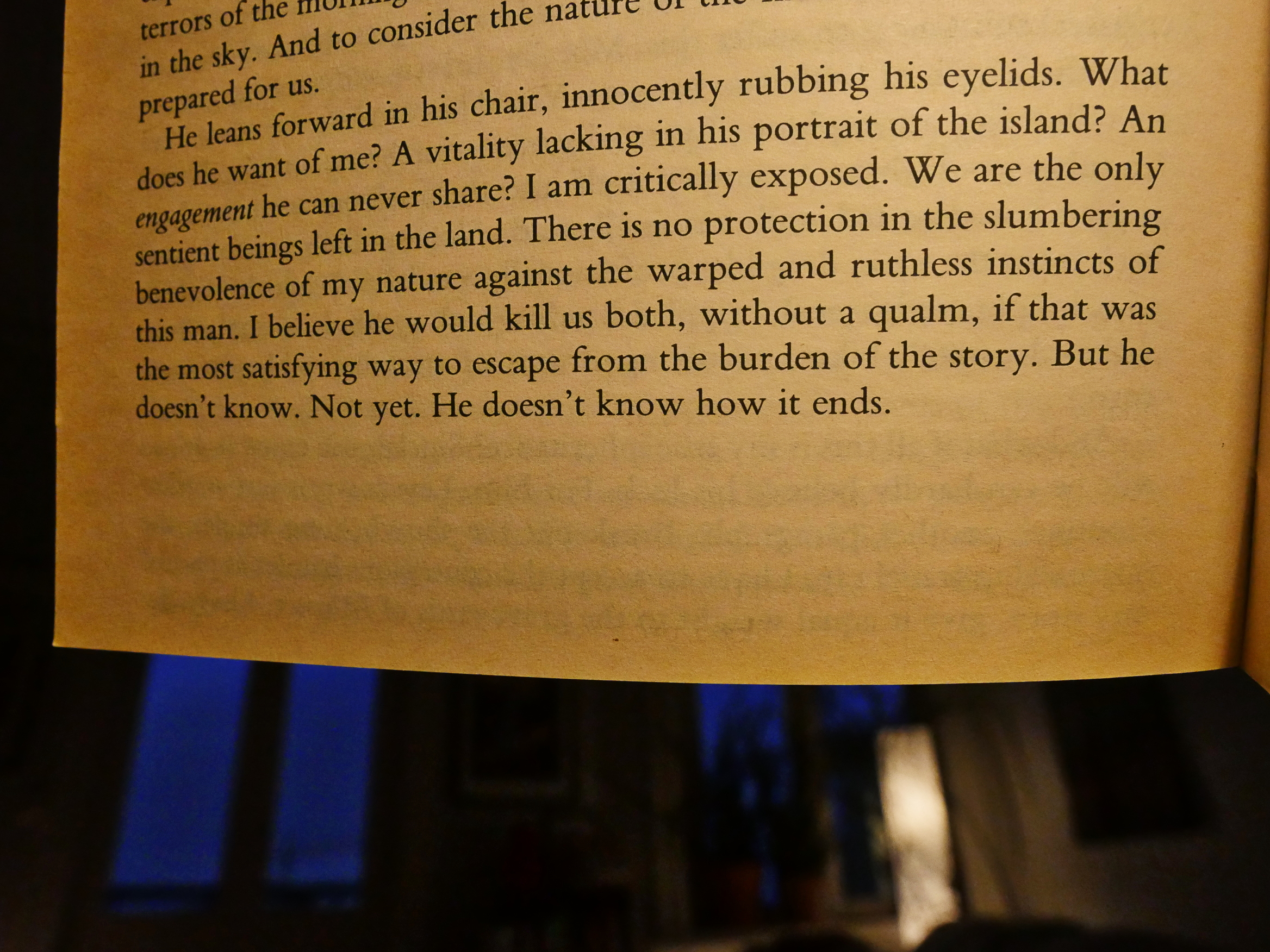
2 thoughts on “CCCB: Downriver”